Life is a journey
さて、前回の記事で熊野古道の概要と「なぜ今出かけるべきか?」について書きましたが今回はいよいよ古道歩きの様子をお伝えします。
In my previous article, I wrote about the Kumano Kodo and why we should go out now, but now it’s time to tell you about the ancient road.
紀伊田辺の駅前から出ているバスに乗って約40分。滝尻で下車。
バスを降りたらすぐにある神社、滝尻王子から歩き始める。ここは現世と熊野の神々が籠もる黄泉の国との境であり、古道を行く人々の要所となったところ。この滝尻から奥は御山、熊野の霊域だと考えられていて現在ではここからスタートするのが一般的。
Take the bus that leaves from Kii-Tanabe Station and get off at Takijiri.
After getting off the bus, we started walking from the Takijiri Oji shrine. This is the border between this world and the land of Hades, where the gods of Kumano are holed up, and was a key point for people traveling along the ancient path. The area from Takijiri to the end of the path is considered to be the sacred area of Kumano, and nowadays it is common to start from here.
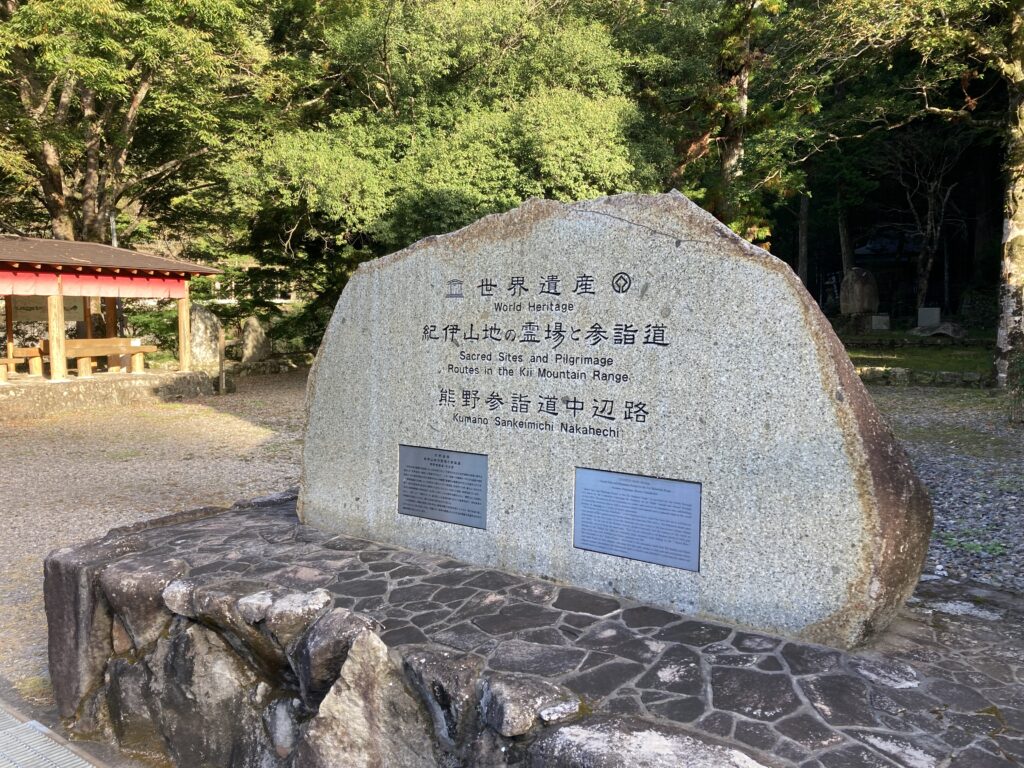
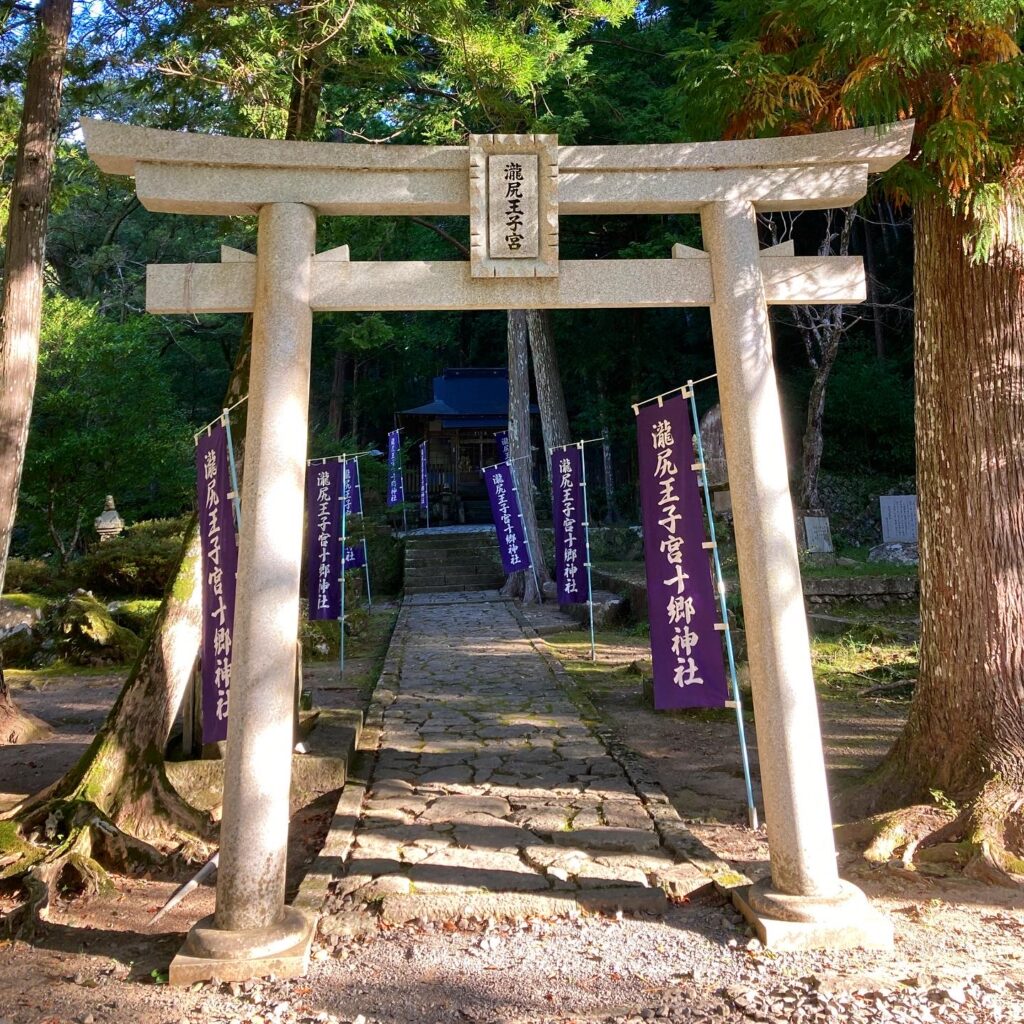
この日の目的地は13km程度の山道ほど歩いた先の集落、近露、熊野詣で古く宿場として賑わった地域だ。
滝尻王子宮十郷神社で旅の安全をお参りしてからいよいよ古道に入る。
Our destination for the day was Chikatsuyu, a village about 13 kilometers down the mountain road, which used to be a popular lodging place for Kumano pilgrims.
After paying a visit to Takijiri-oji shrine to pray for the safety of our journey, we finally entered the old road.
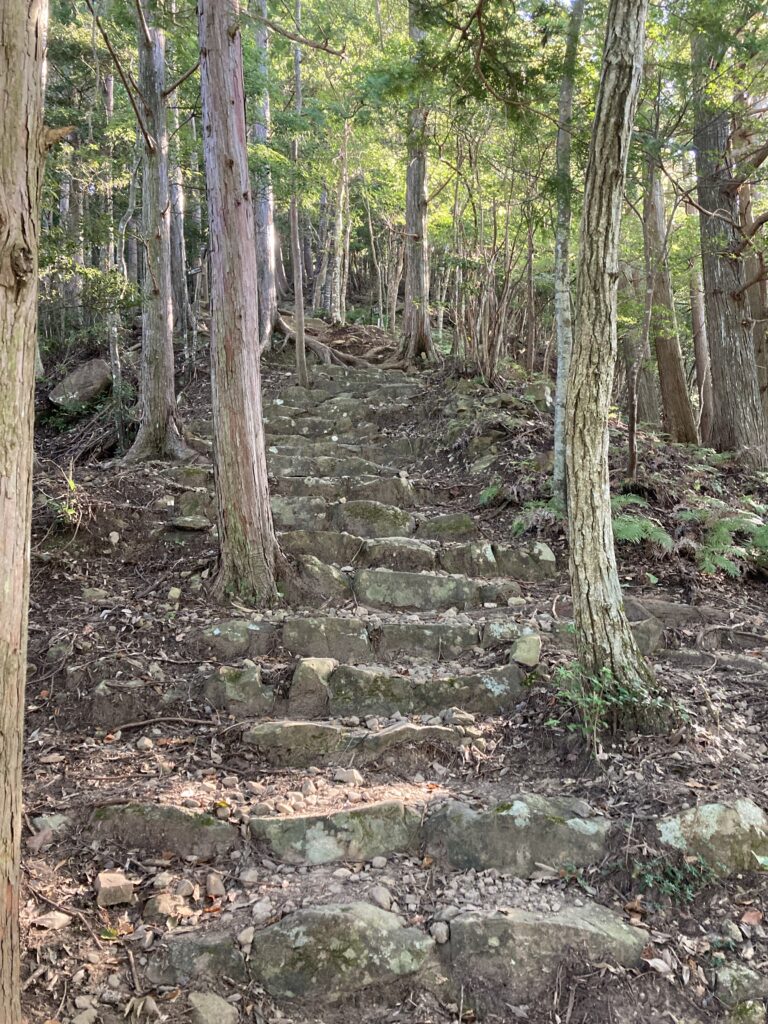
すると、最初はいきなり結構な登り。
約900年前に熊野参詣を果たした公卿(上級貴族)の藤原宗忠は「手の平を立てたような急坂」と記しているほどの上り坂である。
At first, it was quite a climb.
It was so steep that Munetada Fujiwara, a nobleman who made a pilgrimage to Kumano about 900 years ago, wrote “this slope is as steep as the palm of a hand”.
道中には、奥州平泉の藤原秀衡が、妻が子種を授かったお礼に熊野参詣した際、途中で産気づいてしまった妻がこの地で赤子を産み落とし、神のお告げの通り岩の下に赤子を預けて本宮まで参詣し、その間、残された赤子はこの大岩から滴り落ちる乳を飲み、この山のオオカミに守られ、両親が参詣から戻るまでに立派に育っていた…という伝説が残る「乳岩」や、その横に今も安産祈願に訪れる人が多い「胎内くぐり岩」があったり、
Along the way, there is a legend that when Fujiwara no Hidehira of Hiraizumi, Oshu, and his wife went to Kumano to thank the gods for the chance to have a child, the wife gave birth to a baby here, and as the gods told her, she left the baby under a rock and went to the main shrine. During the journey, the baby drank milk dripping from this large rock, was protected by the wolf of the mountain, and had grown up well before the parents returned from their pilgrimage.This is where the “Chichi Iwa (Milk Rock)” is located, and next to it, there is the “Tainai Kuguri Iwa (Womb Passing Rock),” which many people still visit to pray for a safe delivery.

当時の王子を示す石碑が残されていたり、見どころ盛り沢山。
There are still stone monuments showing the old small shrine and many other things to see.
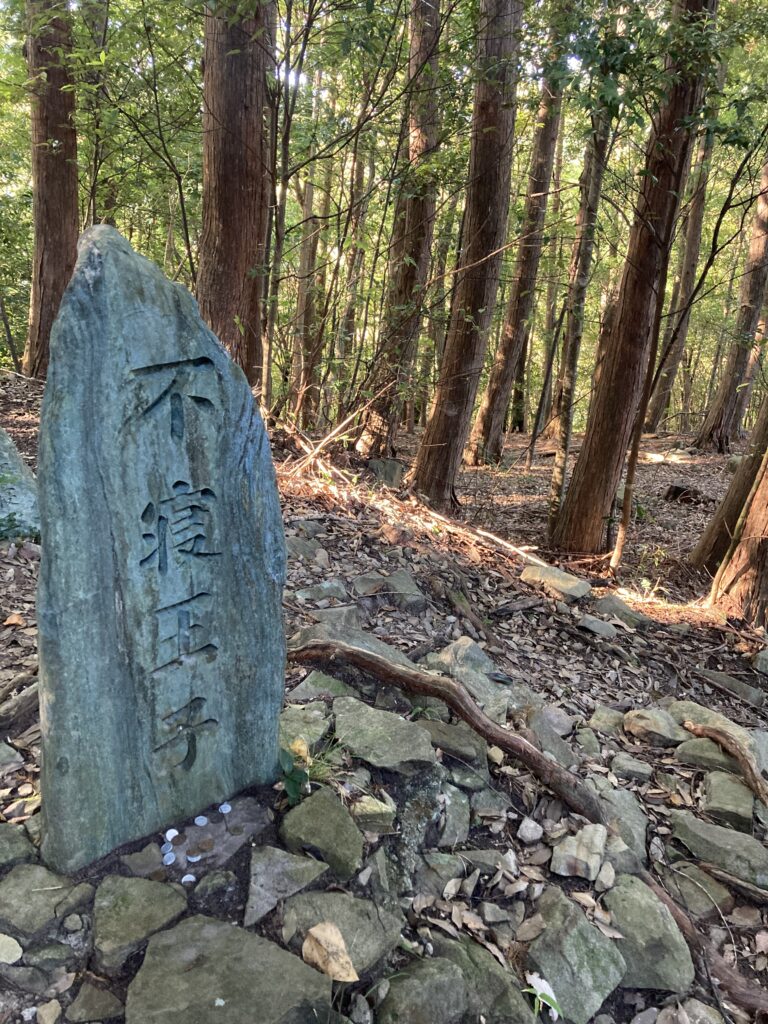
王子とは、熊野権現の御子神だと考えられていて、それを祀る拝所でもある。奉幣(神前に幣をたてまつること)と経供養(経を供えたり経を読むこと)などの儀式が行われ、里神楽や馴子舞、和歌会などの奉納が行なわれることもあったそうだ。)
Oji is thought to be the son of Kumano Gongen, and this is also the place of worship for him. Rituals such as offering money to the gods and reading sutras were held here. It is said that there were also times when the shrine was dedicated to traditional Japanese music, dance, and waka performances.
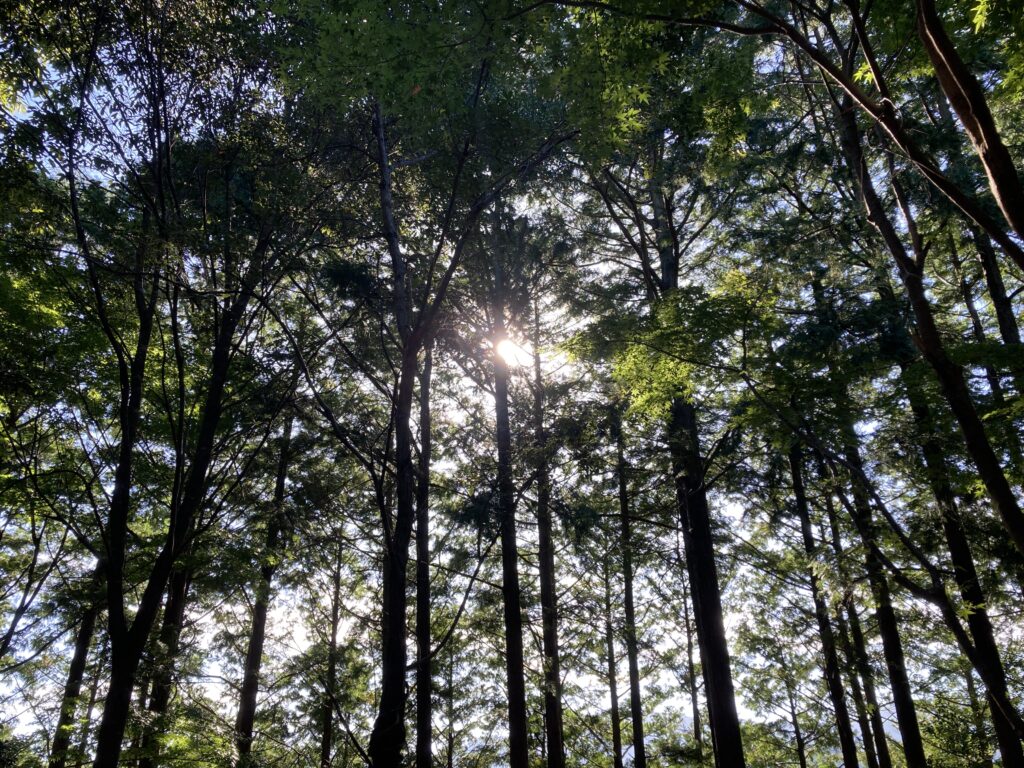
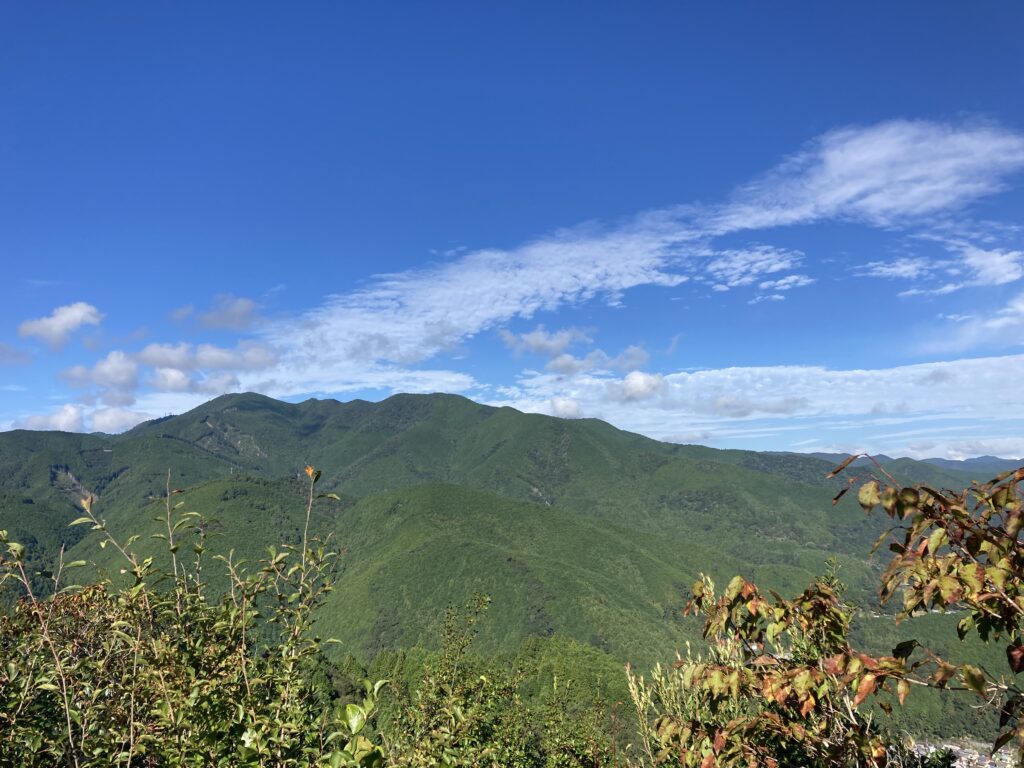
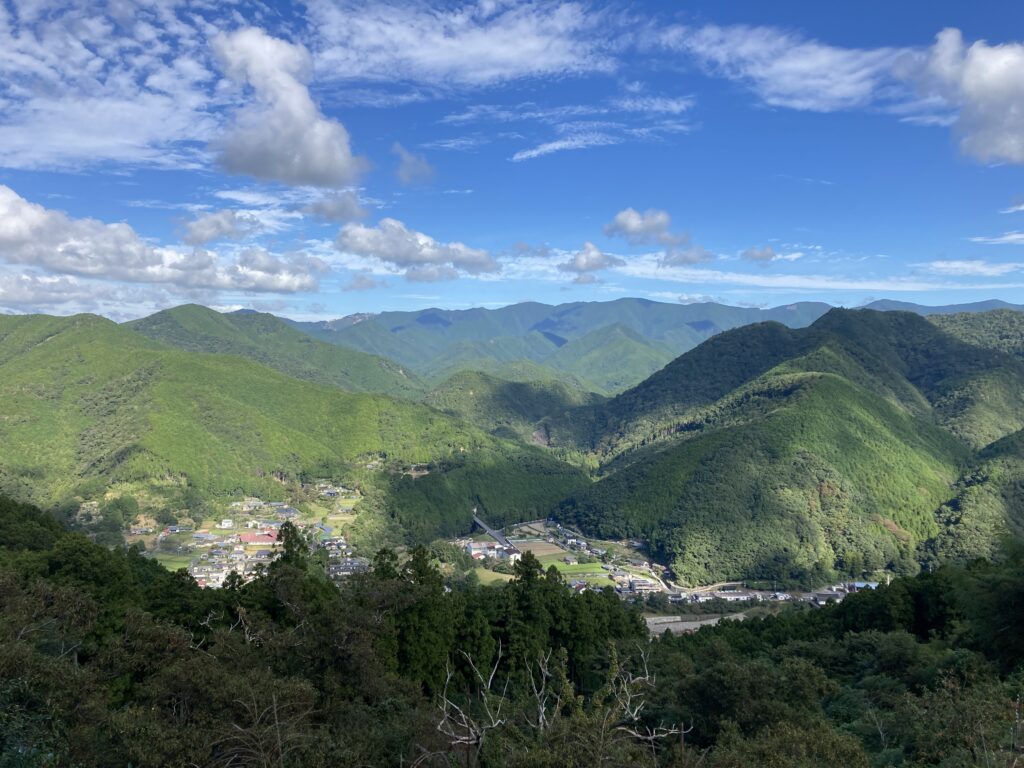
歩き始めて2時間くらいで高原熊野神社に到着。この神社は比較的新しく熊野九十九王子には入っていないが、朱塗りの社殿は応永10年(1403年)に再建されたもので、室町時代の建築様式を今に伝える、熊野古道沿いに現存する神社の中では最古のもの。
After about two hours of walking, we arrived at Takahara Kumano Shrine.This shrine is relatively new and is not included in the 99 Kumano Oji, but the vermilion-lacquered shrine pavilion was rebuilt in 1403, and is the oldest existing shrine along the Kumano Kodo that still retains the architectural style of the Muromachi period.
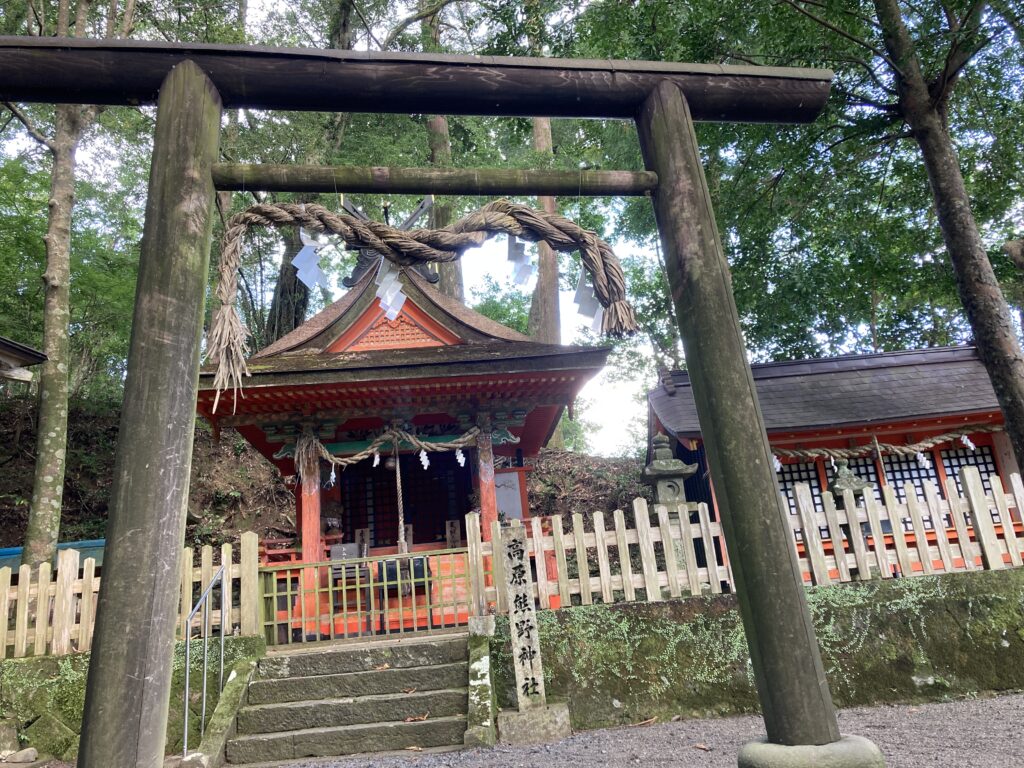
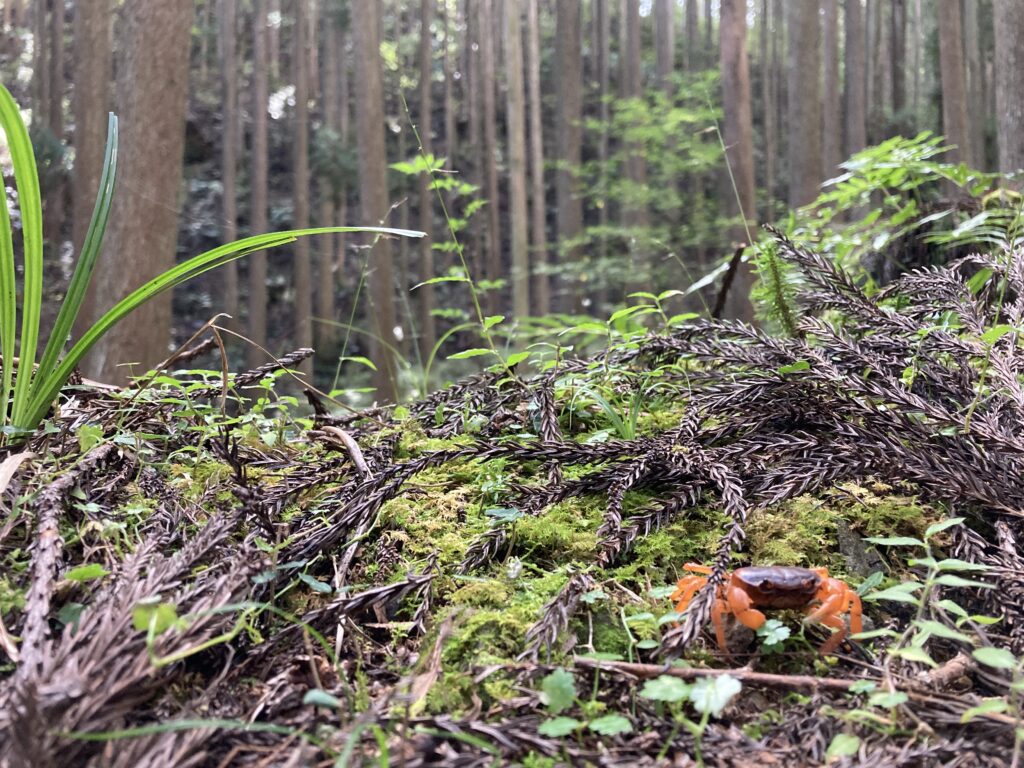
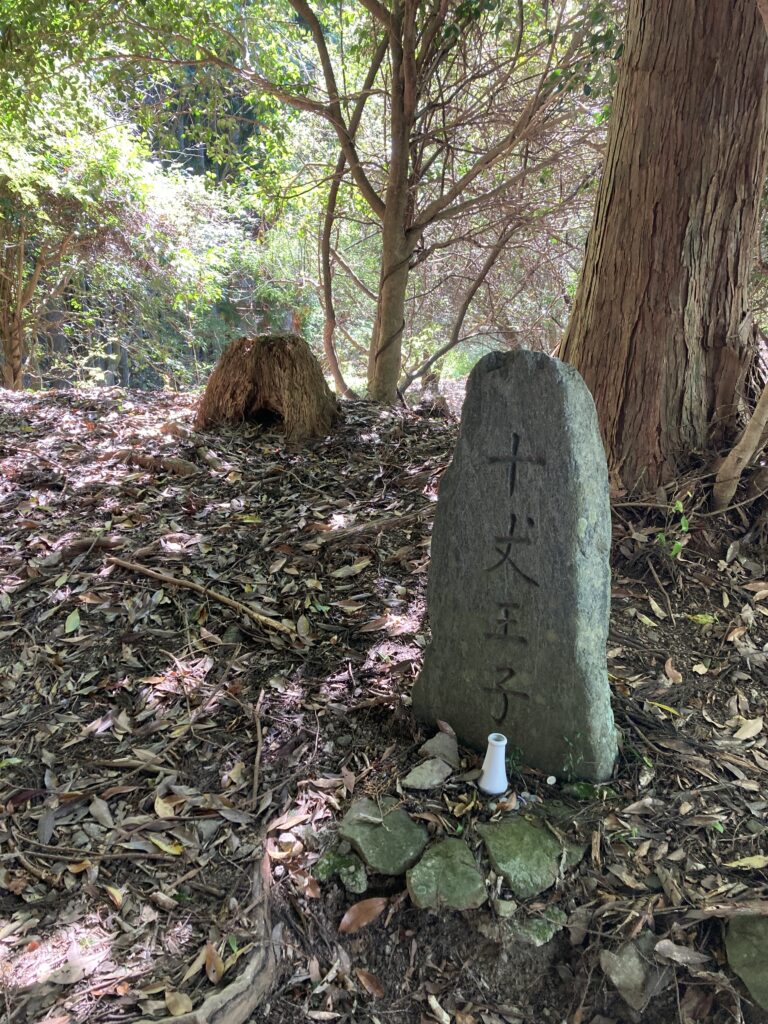
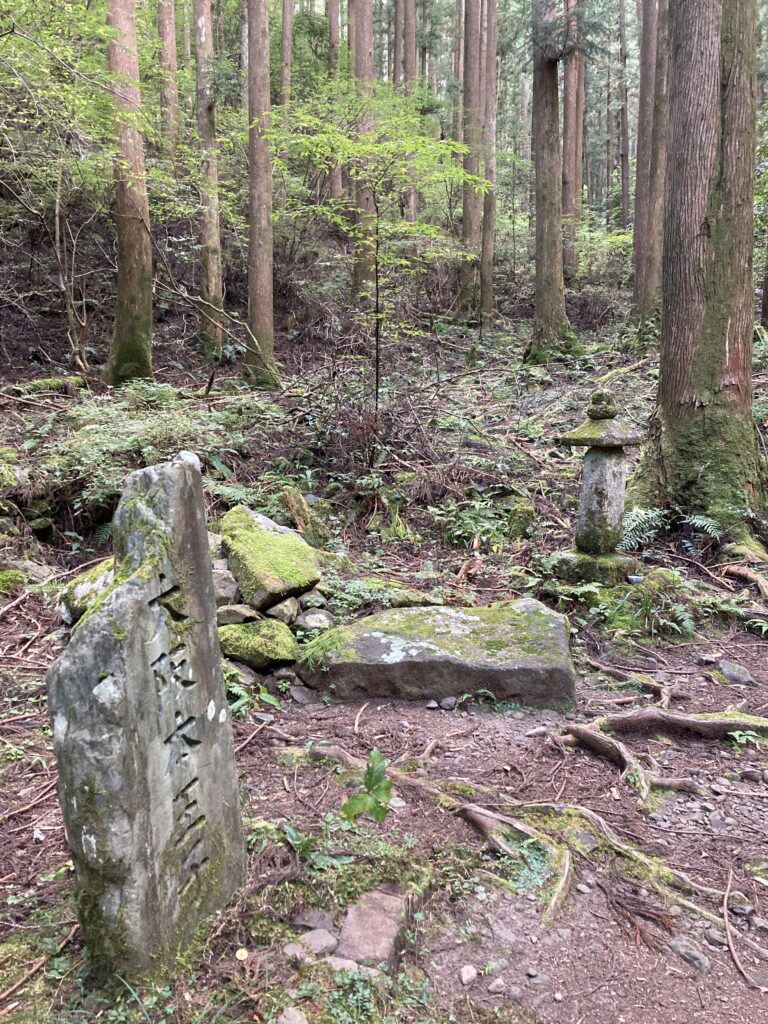
大門王子、十丈王子、大阪本王子、そしてかわいい牛馬童子像などを過ぎれば…
After passing the Daimon Oji, Jujyo Oji, Osaka Hon Oji, and the cute statue of Gyubadohji, you will be able to see…

もう間も無く1日目の目的地、近露。
Soon we will be at our destination for the first day, Chikatsuyu.
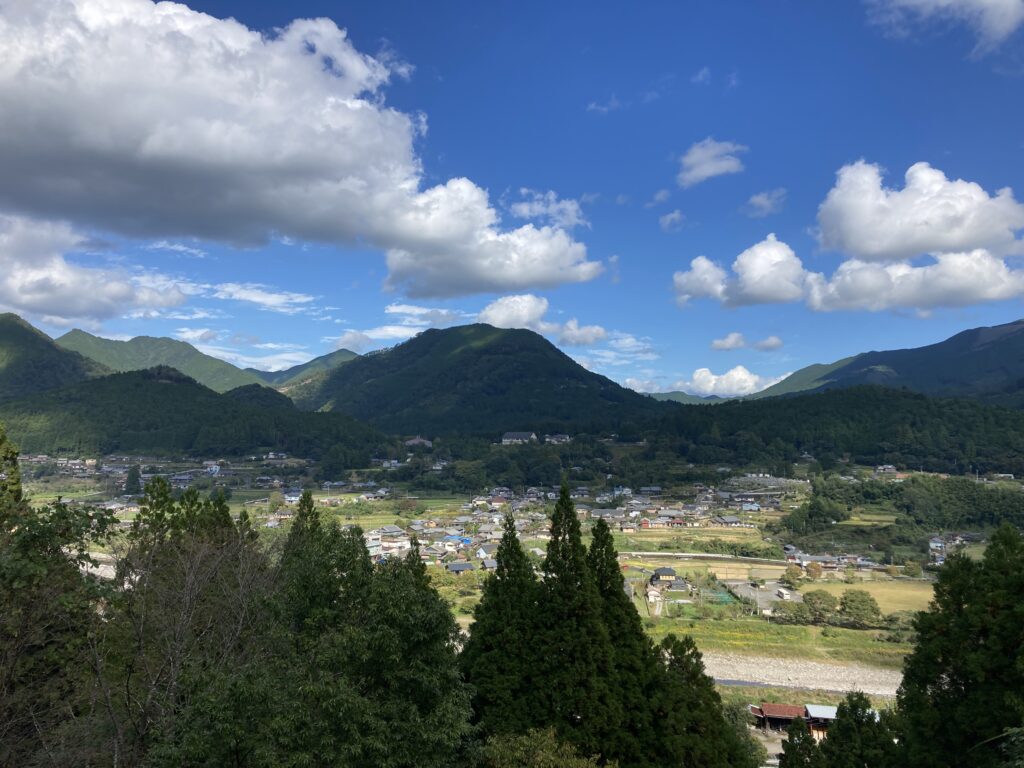
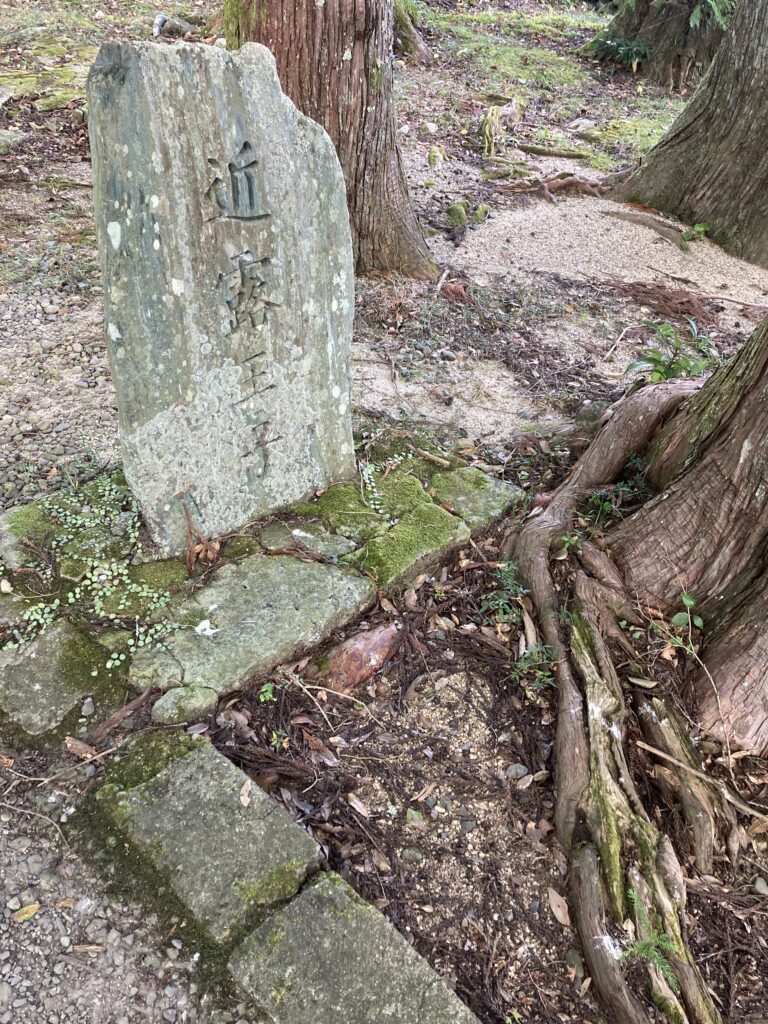
後鳥羽院の仮御所があったと言われる近露は、江戸時代には中辺路参詣の要衝、宿場町として栄えたそうで、今でも数件の旅館や民宿があり比較的宿が取りやすいため、この日は我々もここで休息。
Chikatsuyu, where the temporary palace of Emperor Go-Toba is said to have been located, prospered in the Edo period as an important stop on the pilgrimage to Nakaheji and as an inn town, and even today there are several inns and guest houses, making it relatively easy to get accommodation. So we also rested here.
温泉に入り、疲れた体に染みる夕食と自家製の梅酒で1日目を終えた。
We finished the first day with a hot spring bath, dinner that soaked our tired bodies, and homemade plum wine.
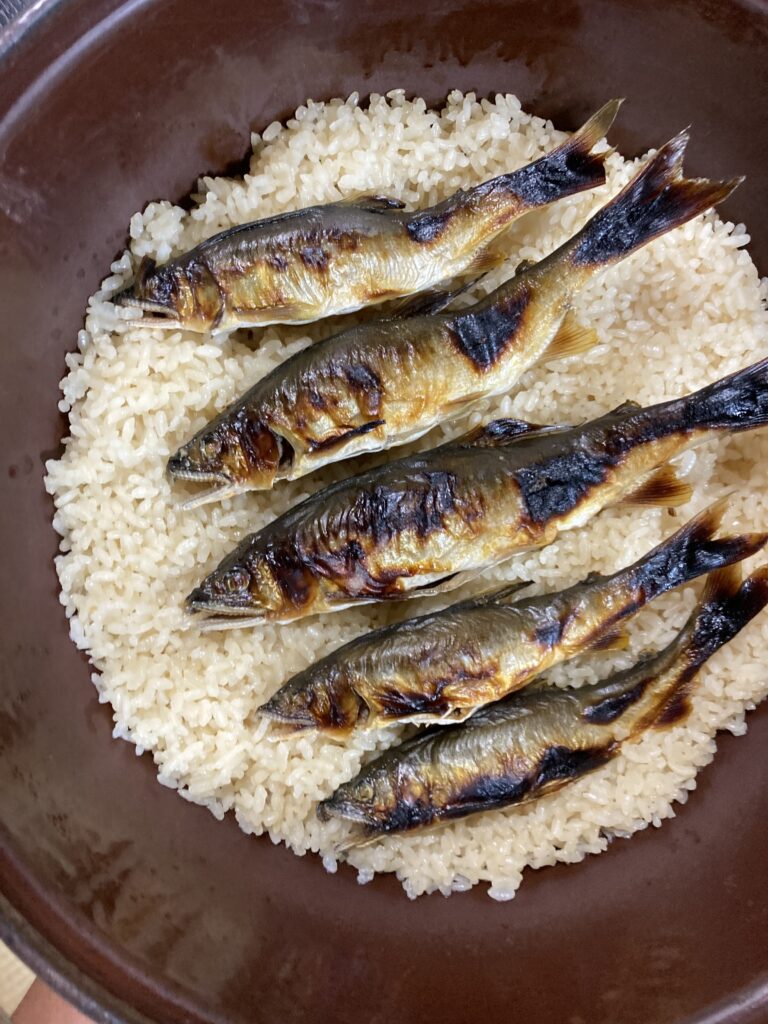
この日は今回の旅で一番長い行程。全ての道のりを王子にならい歩ききりたい…ということでなければ、ここから発心門王子まではバスで移動するのも良いでしょう。
我々は完歩を目指して朝早くに出発。
This was the longest day of the trip. Unless you want to follow the old small shrines all the way, you may better to take a bus from here to Hoshinmon Oji.
We left early in the morning to complete the walk.
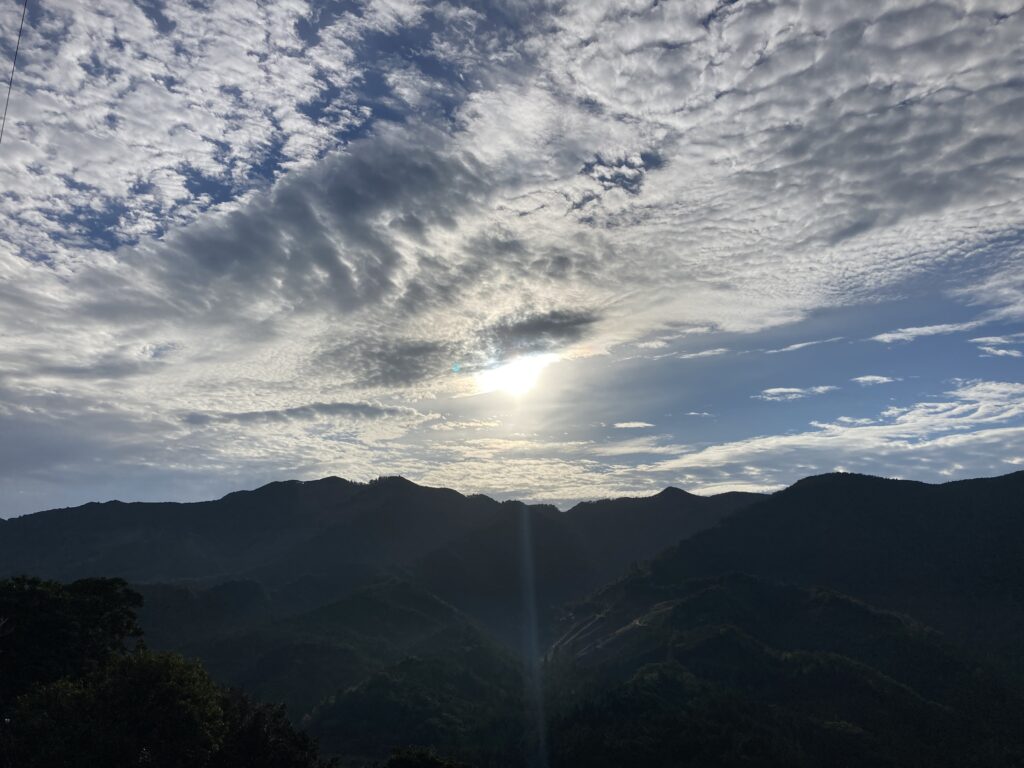
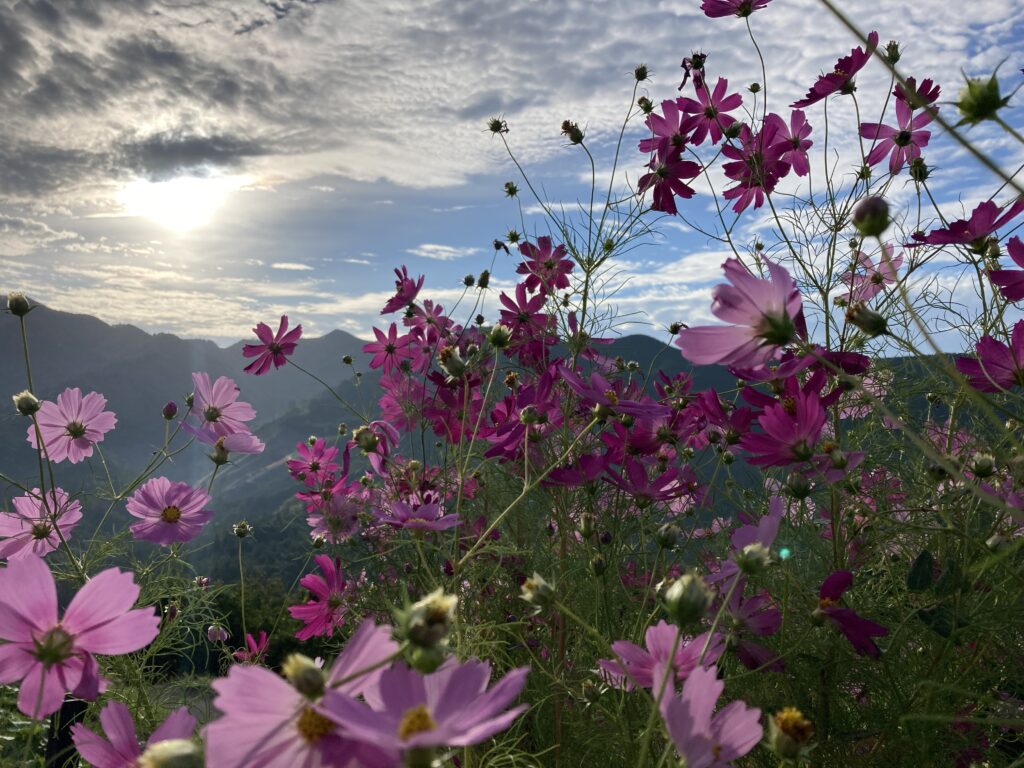
比曽原王子、推定樹齢800年ほどの杉の巨木が立ち並ぶ継桜王子を越え
We crossed over the Hisohara Oji and the Tsuki-zakura Oji, which is lined with huge cedar trees estimated to be about 800 years old,
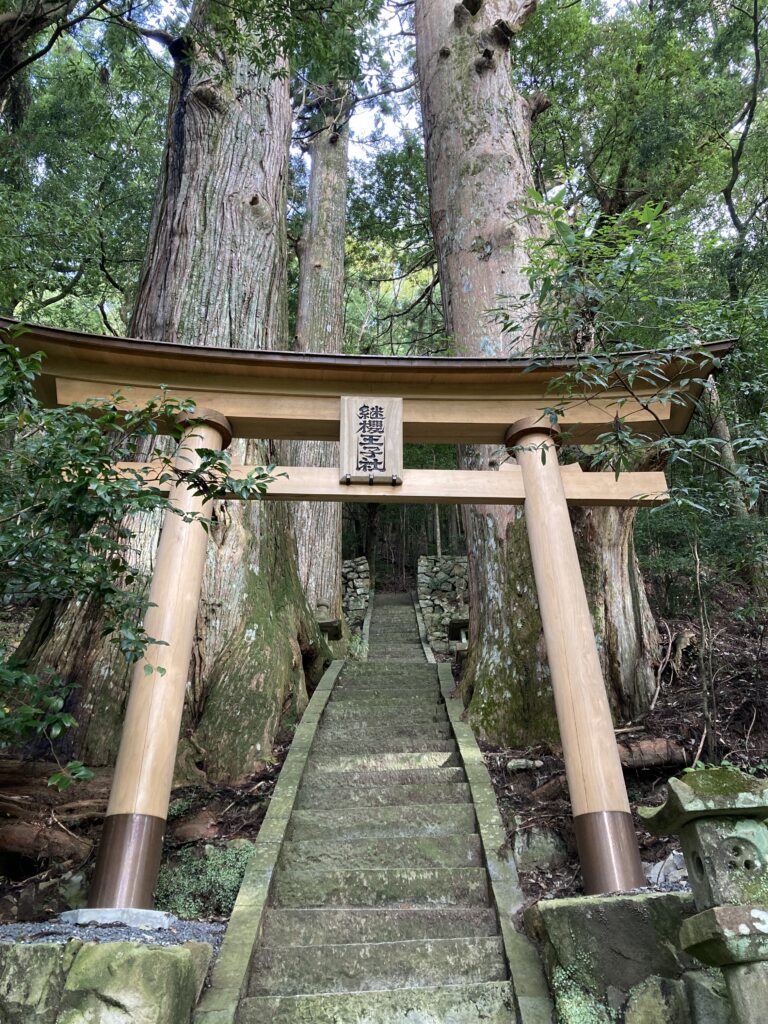
中川王子(古くは中ノ河王子)、小広王子、熊瀬川王子を経てしばらく行くと、2011年の台風9号による影響で道が崩れて迂回を余儀なくされている区間に入る。
この迂回区間の峠がなかなか辛かった。
After passing by Nakagawa Oji (formerly known as Nakanokawa Oji), Kobiro Oji, and Kumasegawa Oji, we entered a section where the road collapsed due to Typhoon No. 9 in 2011, forcing us to make a detour.
This detour section of the pass was quite difficult.
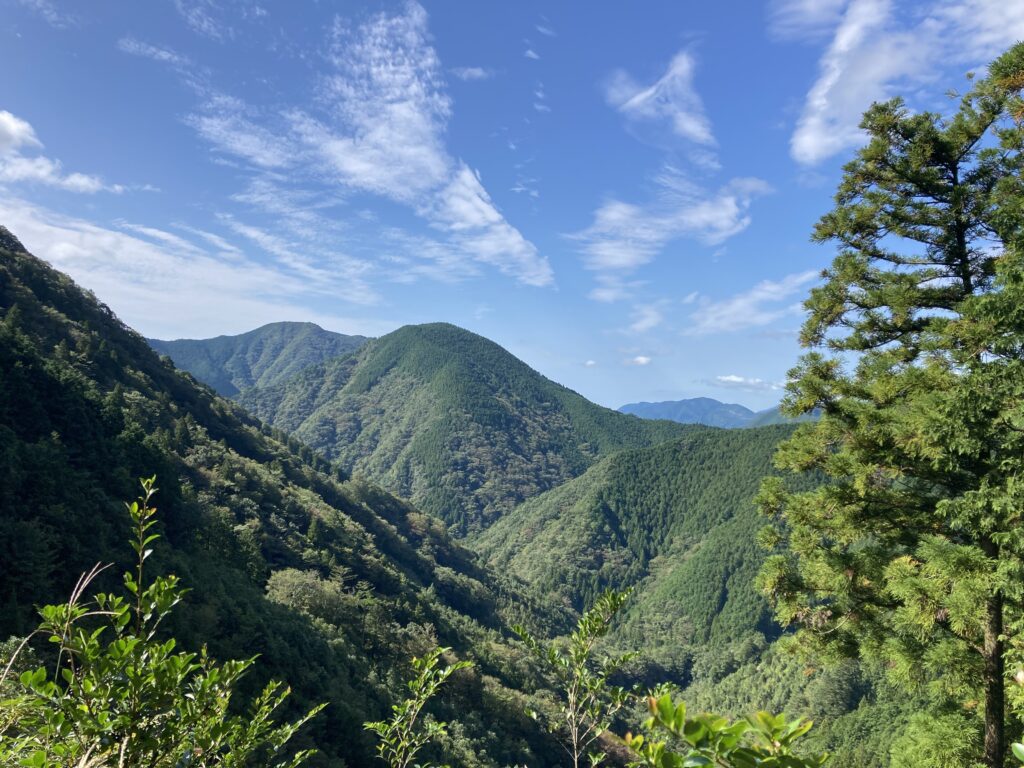
大きな峠をやっと超えたかと思うと一気に降り、迂回路は終了し蛇形地蔵で古道と合流するのだが、この時点までで結構な体力を消耗。
We finally crossed a large mountain pass and descended all the way down, ending the detour and joining the old road at Jagata Jizo, but by this point we had exhausted a lot of energy.
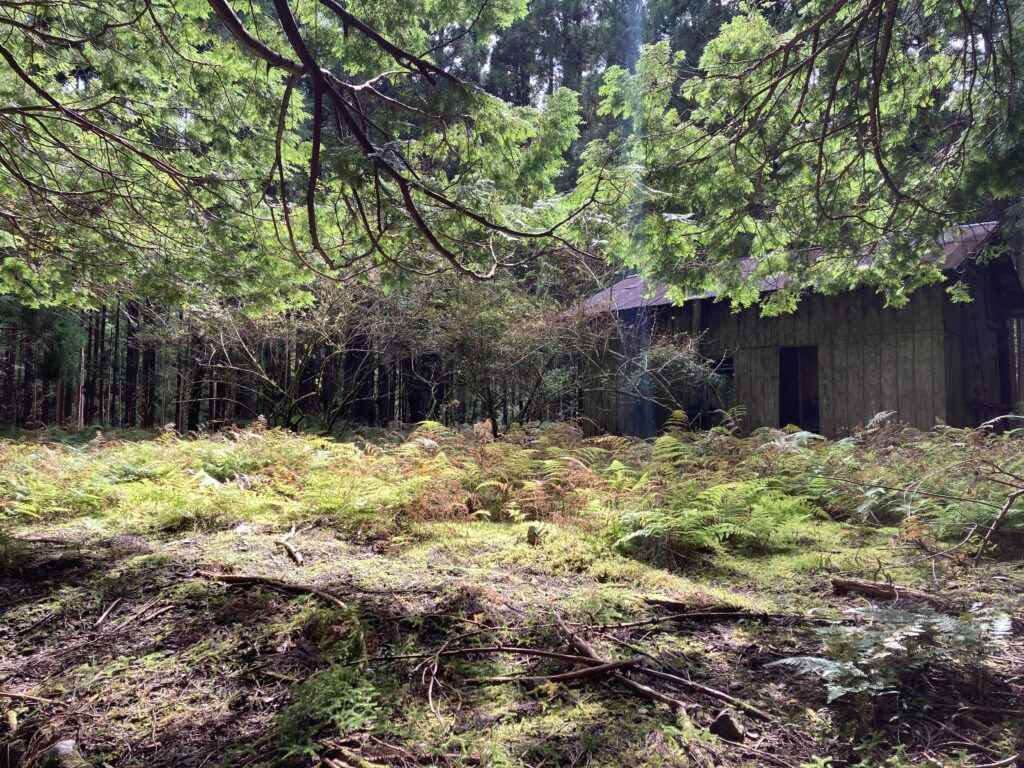
少しジメッと薄暗い湯川王子を越えたらもう一度急な登り。ここを登り切った三越峠にはトイレ付きの東屋があるので、ここで少し長めに昼食を取るなどしてエネルギーを回復させてからその先へ進む。
(ちなみにこの区間はずっと人家もないため、何かあってもすぐに助けを求めることができないのでそのつもりで…。)
After crossing the Yukawa Oji, which is a little gloomy and dark, we climbed steeply again. There is a small pavilion with toilets at Mitsukoshi Pass, so we took a long lunch here to recover our energy before continuing on.
(By the way, there are no houses in this section all the way, so if something happens, you won’t be able to call for help right away, so please be aware of that…)
この時点で距離的には本日の行程の約半分。とはいえまだ残り半分…。
しかしそこからは長い道のりながらほとんどが下り。船玉神社や猪鼻王子)を経て、最後の急登「たっくん坂」を登れば本宮の神域の入り口とされた発心門王子に。ここからが本宮までの最後のパート。中辺路の古道歩きでもここから本宮までだけを歩く方も多く、人気があります。
At this point, we were about halfway through today’s itinerary in terms of distance. However, there was still another half to go…
But from there on, it’s a long way, but mostly downhill.
After passing Funatama Shrine and Inohana Oji, we climbed the last steep slope, Takkun-zaka, to reach Hoshinmon Oji, the entrance to the sacred area of the main shrine. This is the last part of the walk to the main shrine, and is very popular with many people who walk the ancient road of Nakahechi only from here to the main shrine.
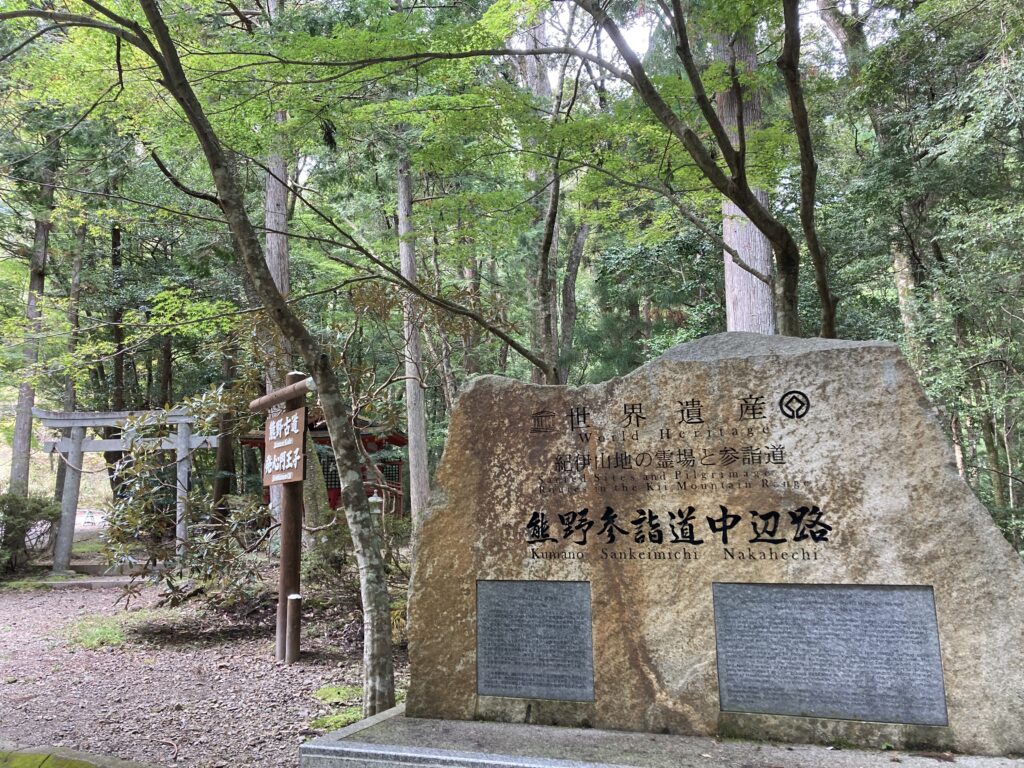
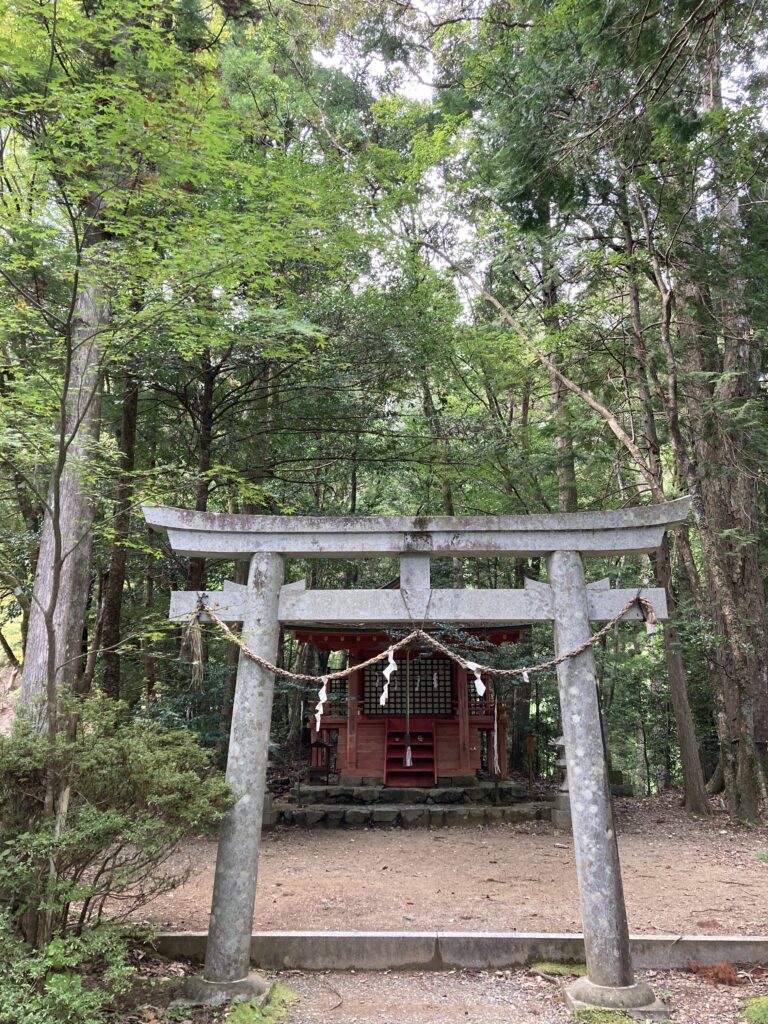
水呑王子の先にある伏拝王子。ここからかつて熊野本宮大社があった大斎原が見え、参詣者は長い旅時の果てにようやく見えたその本宮に感激して伏し拝んだというのがその名の由来だとか。
From here, you can see Oyunohara, where the Kumano Hongu Taisha Shrine used to be located, and it is said that the name comes from the fact that after a long journey, pilgrims were so impressed by the Hongu Shrine that they finally saw it and prostrated themselves in worship.
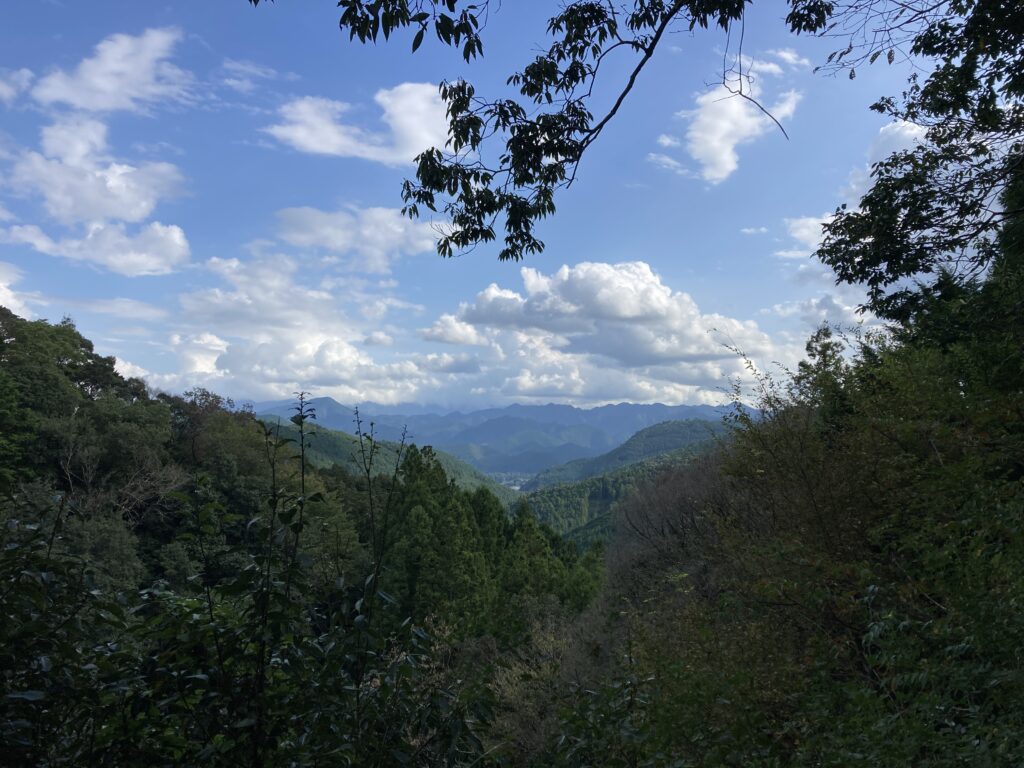
ここから本宮までは残りあと4kmほど。「あと少し。あと少し。」と自分に言い聞かせながら気力で歩いていると“ちょっとよりみち展望台”の看板が見えてくる。「こんなクタクタな状況で寄り道なんて…」と思いがちだが、ここはぜひ寄り道を。
From here to the main shrine, we had about 4 kilometers left. “Almost there. Just a little more.” I kept telling myself, and as I walked with all my strength, I saw a sign that said, “A little bit closer to the observatory” It’s easy to think, “I’m too exhausted to make a detour”, but it’s definitely worth it.
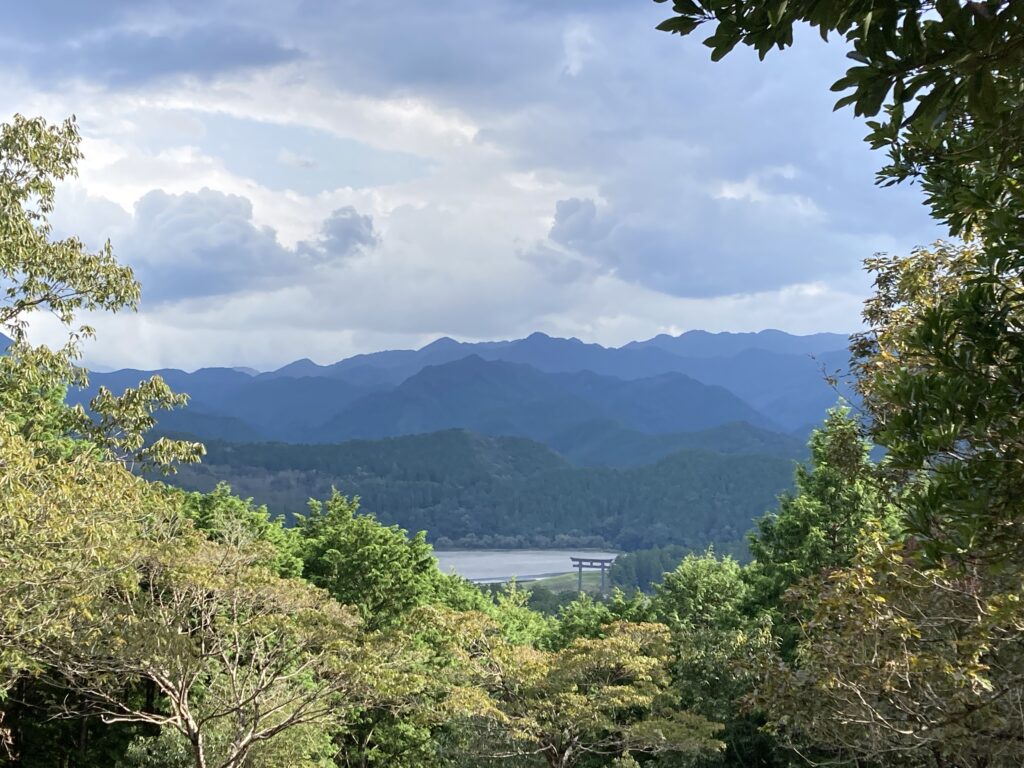
ここからの展望はとても素晴らしく。眼下に大斎原の大鳥居がはっきりと見える。ここでその景色をのぞみながら最後の休憩を入れ、一気に本宮まで降る。
最後の祓戸王子を過ぎれば熊野本宮大社の裏門の鳥居が見えてくる。
The view from here is very impressive. We could clearly see the Otorii gate of Oyunohara below us. We took our last break here to take in the view, and then descended to the main shrine.
After passing the last Haraidooji, you will see the torii gate at the back gate of Kumano Hongu Taisha.
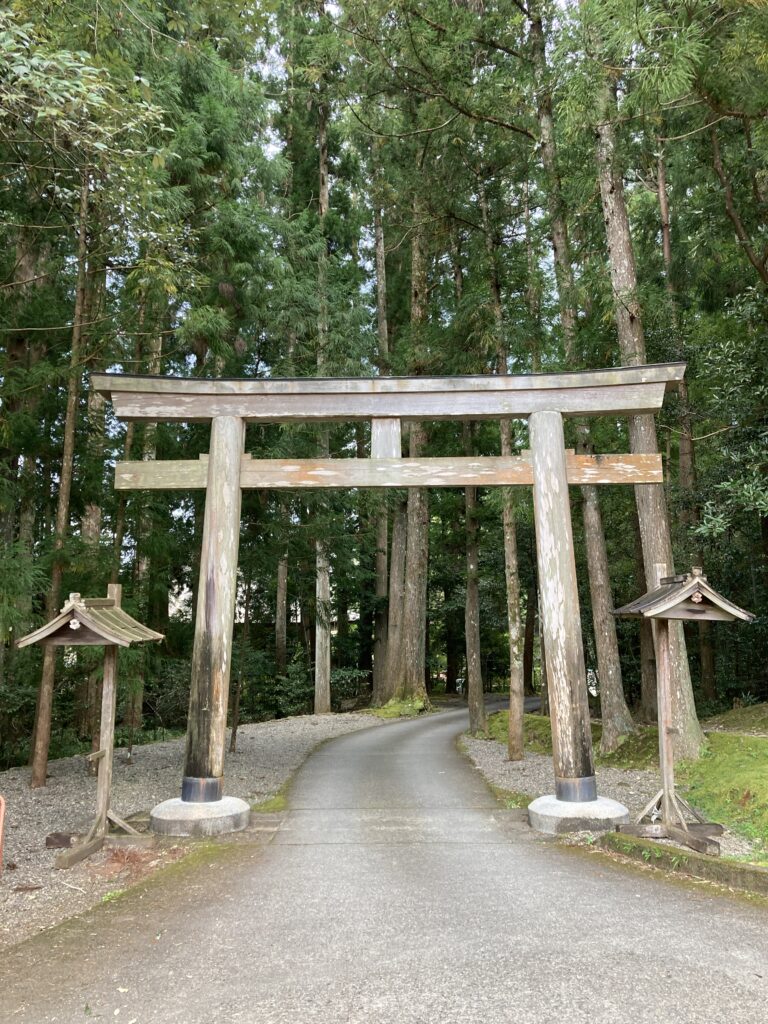
ようやくたどり着いた本宮にお参りすれば感動はひとしお。
When I finally arrived at the main shrine, I was very impressed.
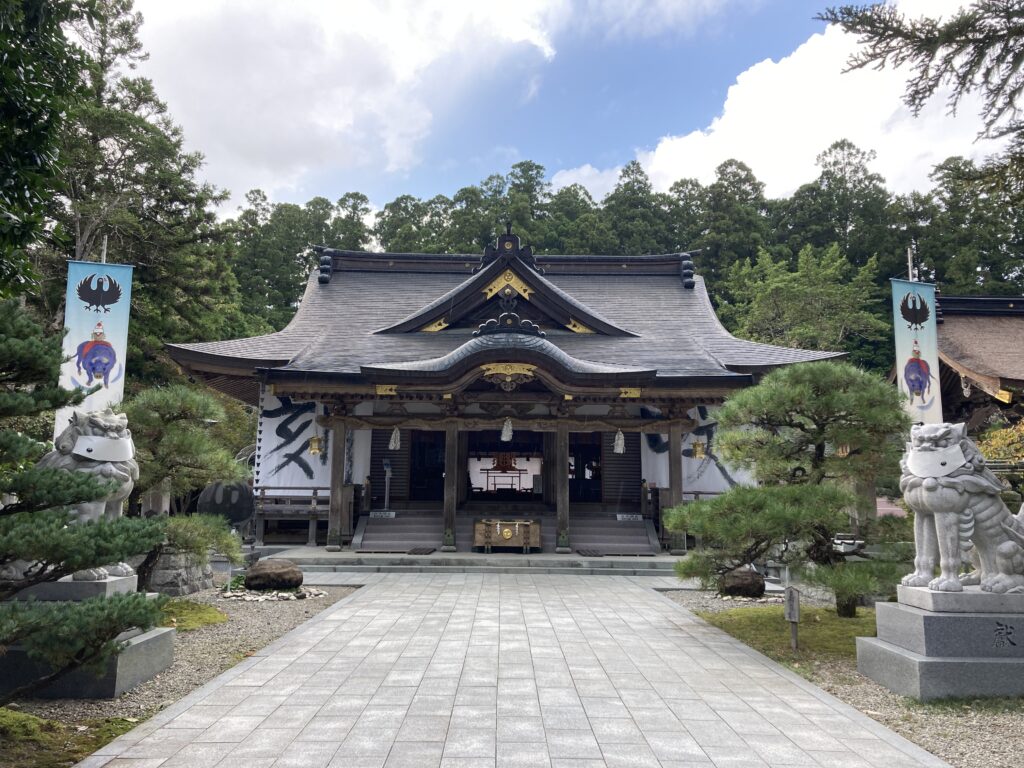
今回の我々の行程では、翌日にはしっかり観光する時間を組み込んでいたので、そのまま宿に直行し長い歩きで疲弊した身体をとにかく休ませた。
Our itinerary this time included time for sightseeing the next day, so we went straight to the inn to rest our bodies exhausted from the long walk.
この日は身体を休める日と考え、短めの移動をお昼から開始することにして、まずは朝から観光。
崇神天皇が65年(紀元前33年)に建てられた熊野本宮大社の社殿が明治22年(1889年)の洪水で流出する以前、もともとの境内があった旧社地、大斎原。そこにある大鳥居は高さ約34m、幅約42mと日本一のもの。
We decided to take this day off to rest our bodies and start a short trip from noon, so we started sightseeing in the morning.
Oyunohara is the former site of the Kumano Hongu Taisha shrine, which was built by Emperor Sujin in 33 B.C. before the shrine buildings were washed away in a flood in 1889. The Otorii gate there is the tallest in Japan at 34 meters high and 42 meters wide.
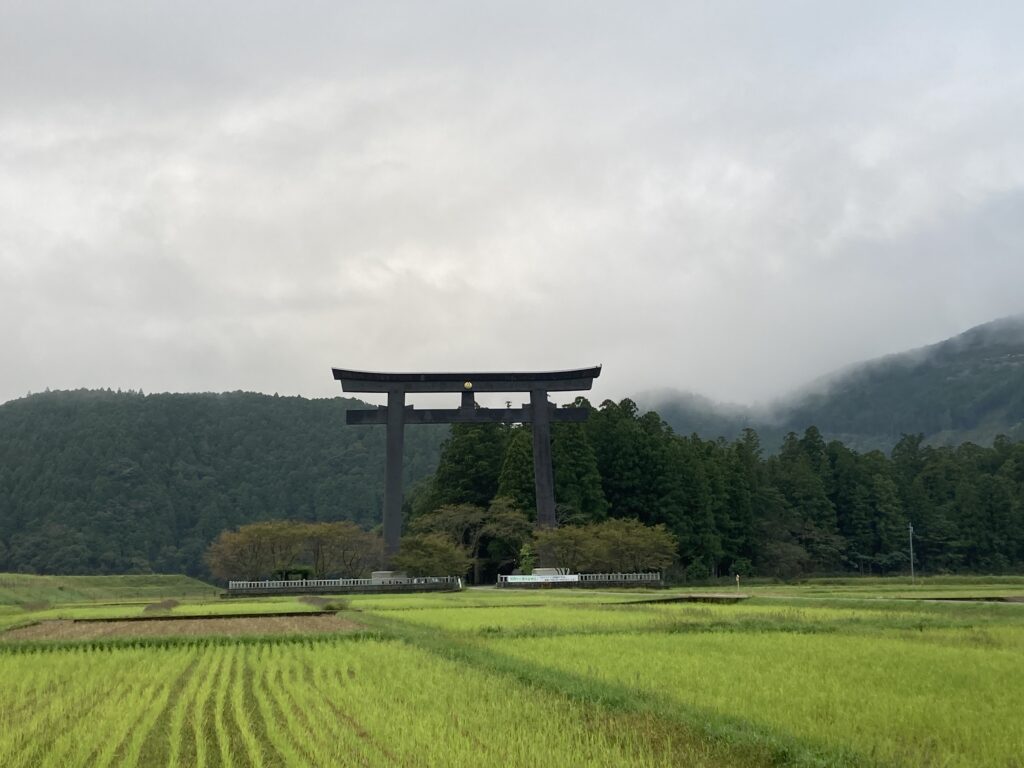
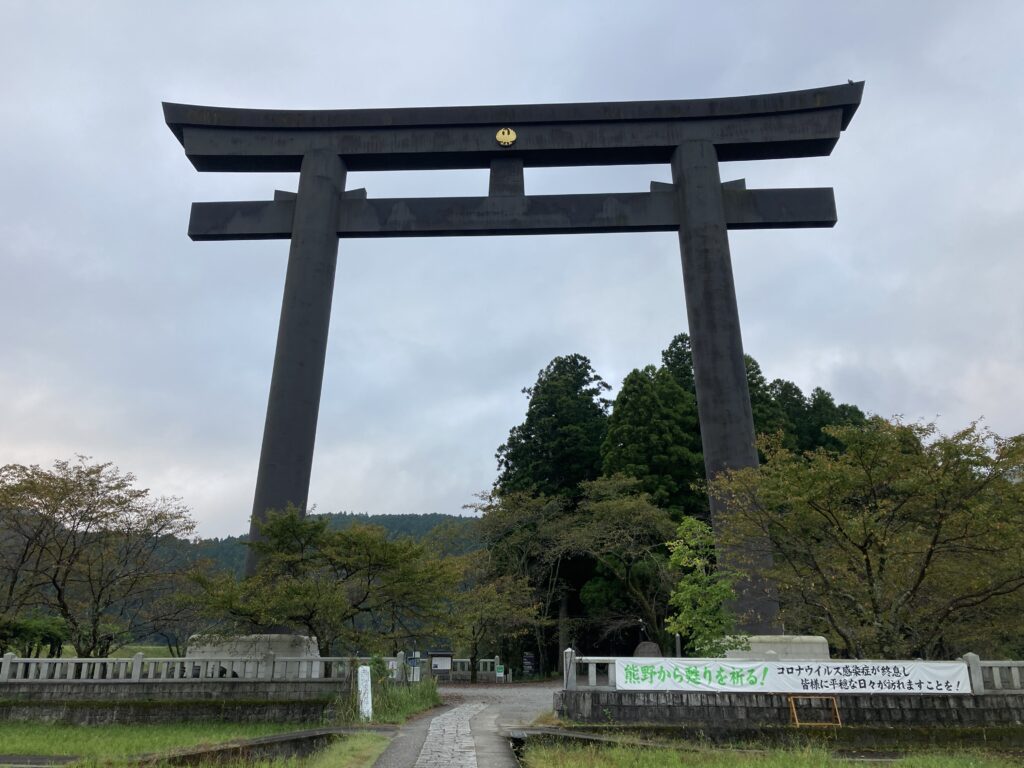
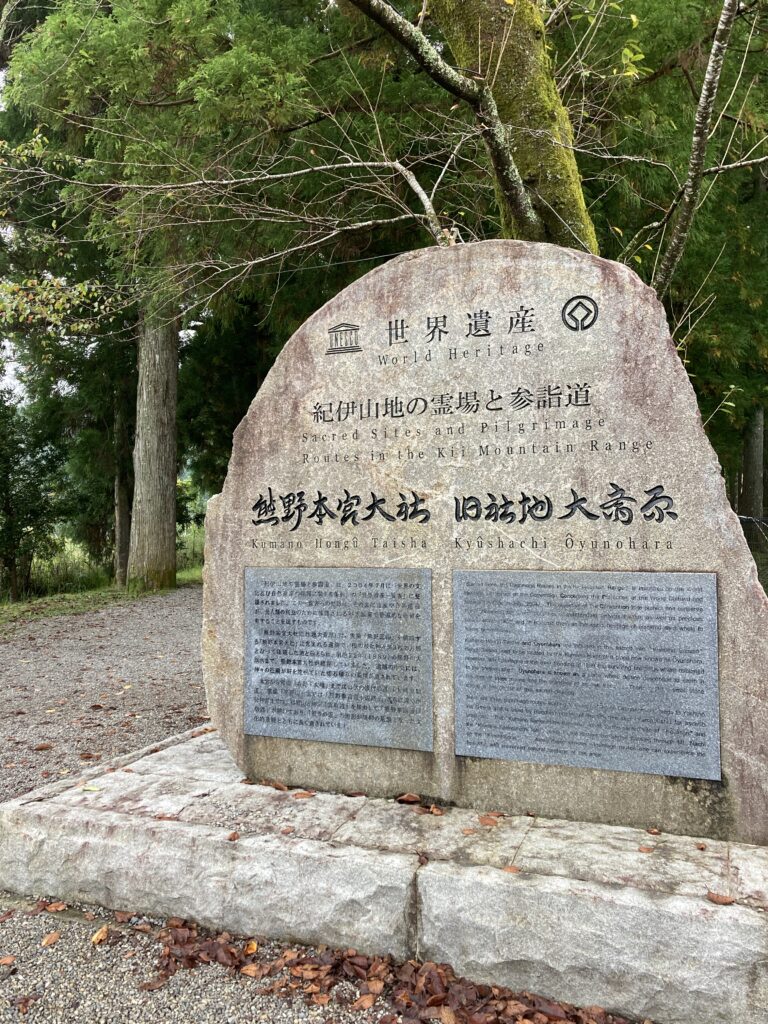
この大鳥居を潜った先は聖域のため撮影禁止。
Photography is prohibited after passing through the Otorii Gate, as it is a sacred area.
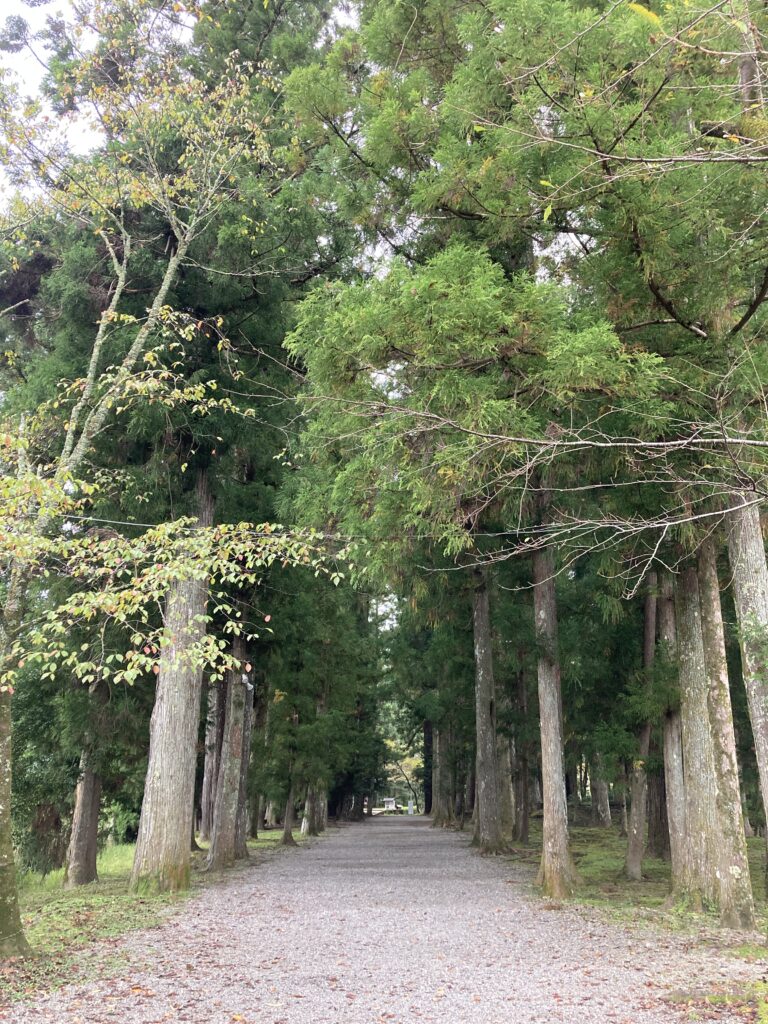
全国に約4000社ある熊野神社の総本宮、「よみがえりの聖地」として信仰を集める熊野の中心といえる存在、熊野本宮大社。
The Kumano Hongu Taisha Shrine is the main shrine of the approximately 4,000 Kumano shrines in Japan, and the center of Kumano, which is worshipped as a “sacred place of revival”.

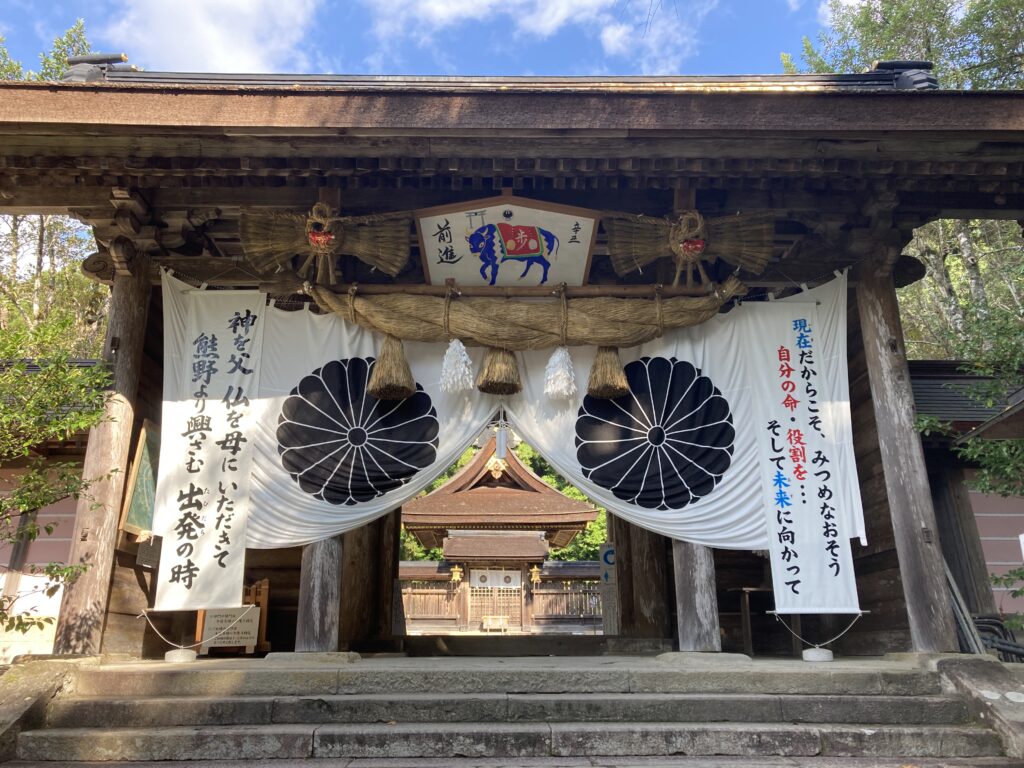
しっかりと時間をかけて参拝したら3.4km、1時間半程度の山道「大日越」を越え、この日の目的地「湯の峰温泉」へと向かう。
After taking the time to pay our respects, we crossed the 3.4 km, 1.5 hour mountain road called “Dainichigoe” and headed for our destination for the day, Yunomine Onsen.
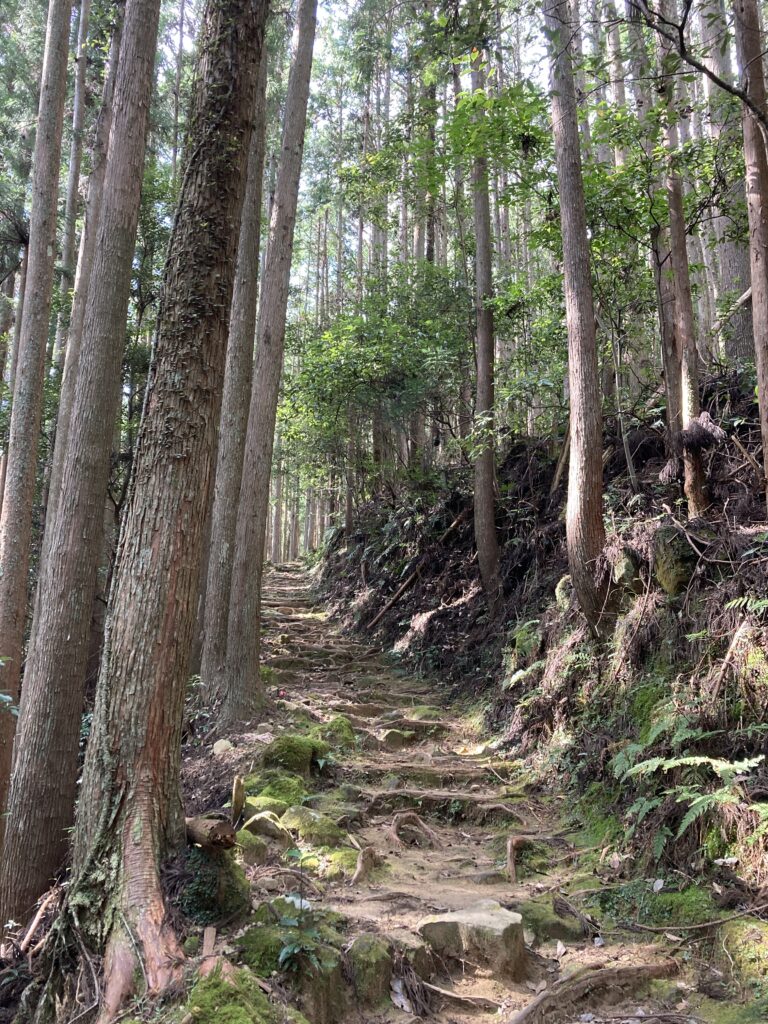
四世紀ごろに発見され開湯1800年。
歴代上皇が熊野御幸の際に立ち寄ったと言われ、日本最古の湯として愛される湯の峰温泉。この日は、古来より聖地での禊ぎと旅の疲れを癒したというこの温泉に我々も癒された。
The hot spring was discovered in the 4th century and has been in operation for 1,800 years.
It is said that successive emperors stopped by Yunomine Onsen on their way to Kumano, and it is loved as the oldest hot spring in Japan. On this day, we were also healed by this hot spring, which has been used since ancient times to purify the sacred ground and heal the fatigue of travel.
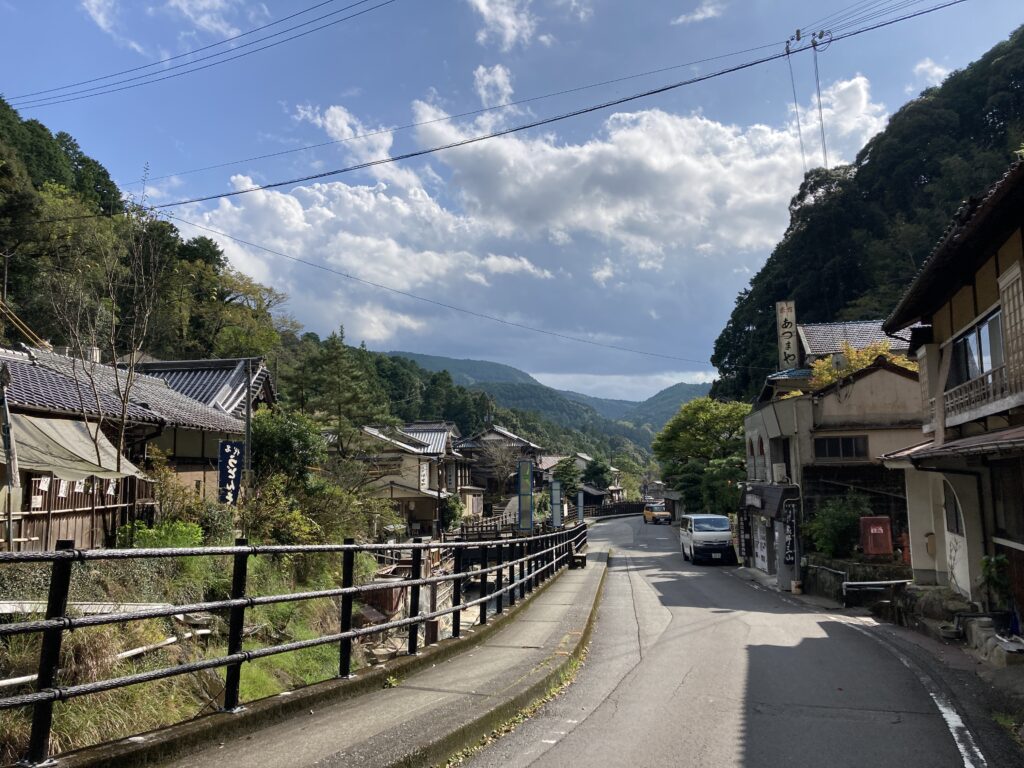
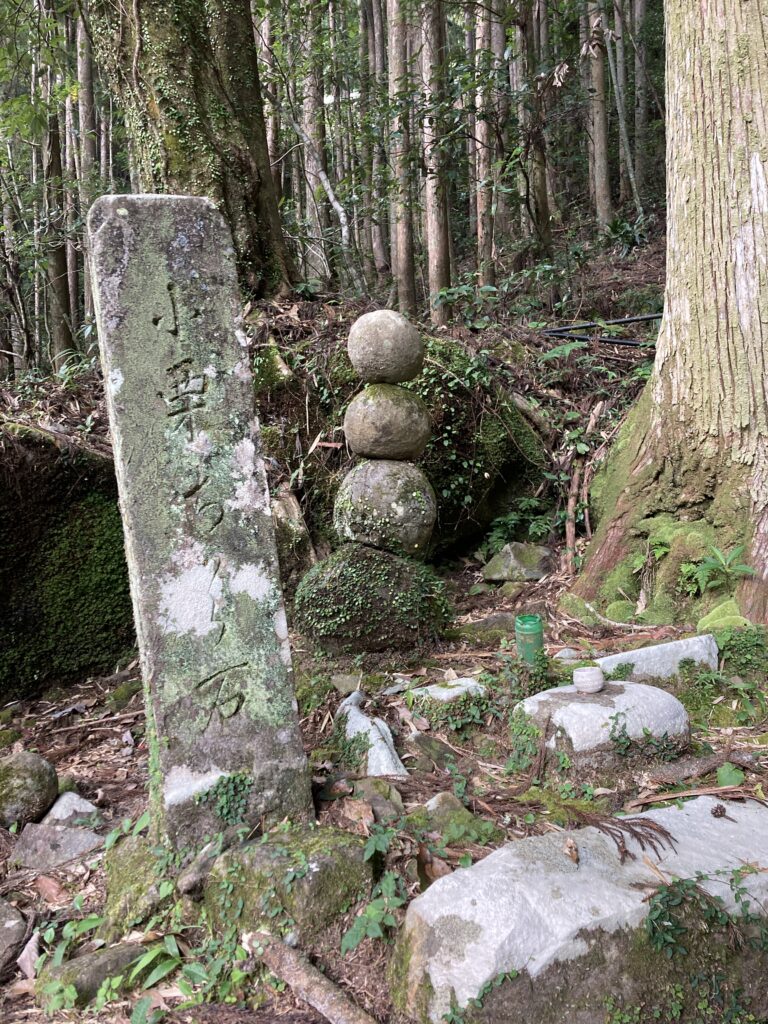
天然温泉の岩風呂「つぼ湯」は参詣道の一部として登録された世界遺産。一人づつしか入れないくらいの小さな湯だが、観光客の少ないコロナ禍の今では待つことなくすぐに入ることができた。
Tsubo-yu, a natural hot spring rock bath, is a world heritage site registered as part of the pilgrimage route.The baths are small enough to accommodate only one person at a time, but now that there are few tourists in covit-19 situation, we were able to get in right away without waiting.
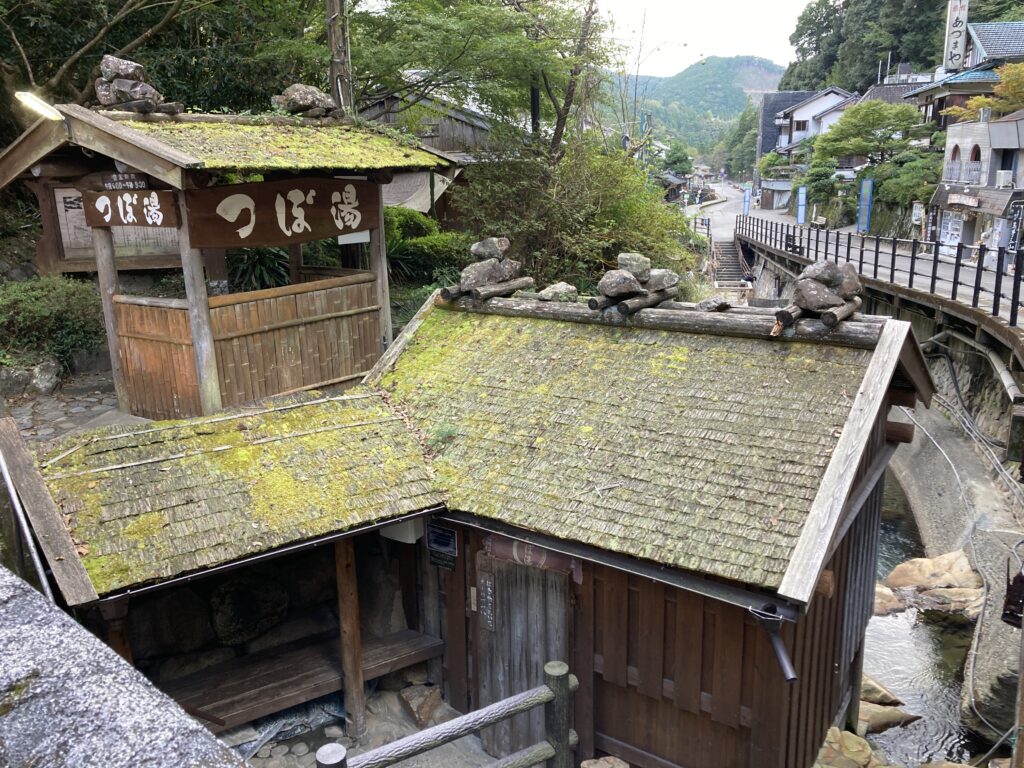
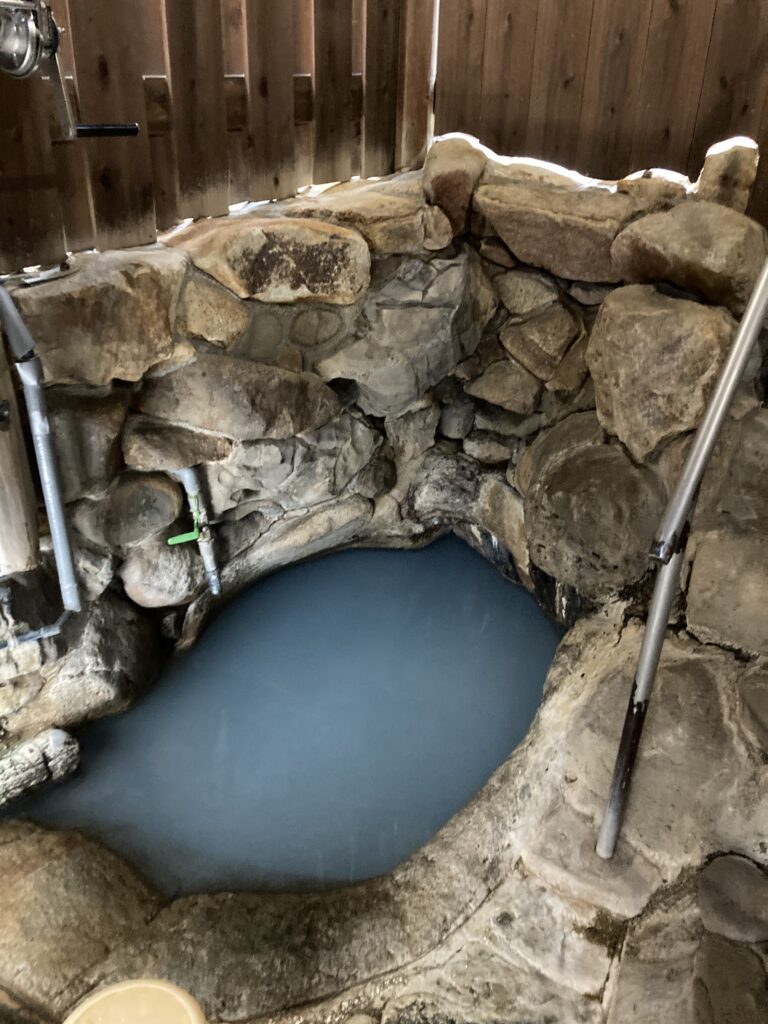
我々がお世話になったのは老舗旅館あづまやさん。
お祭り事などの時もここの宿のお湯が使われるという老舗で、蒸し風呂も有名。
We were taken care of by Azumaya, a long-established ryokan.
It is a traditional ryokan where the hot water is used for festivals, and is also famous for its steam bath.
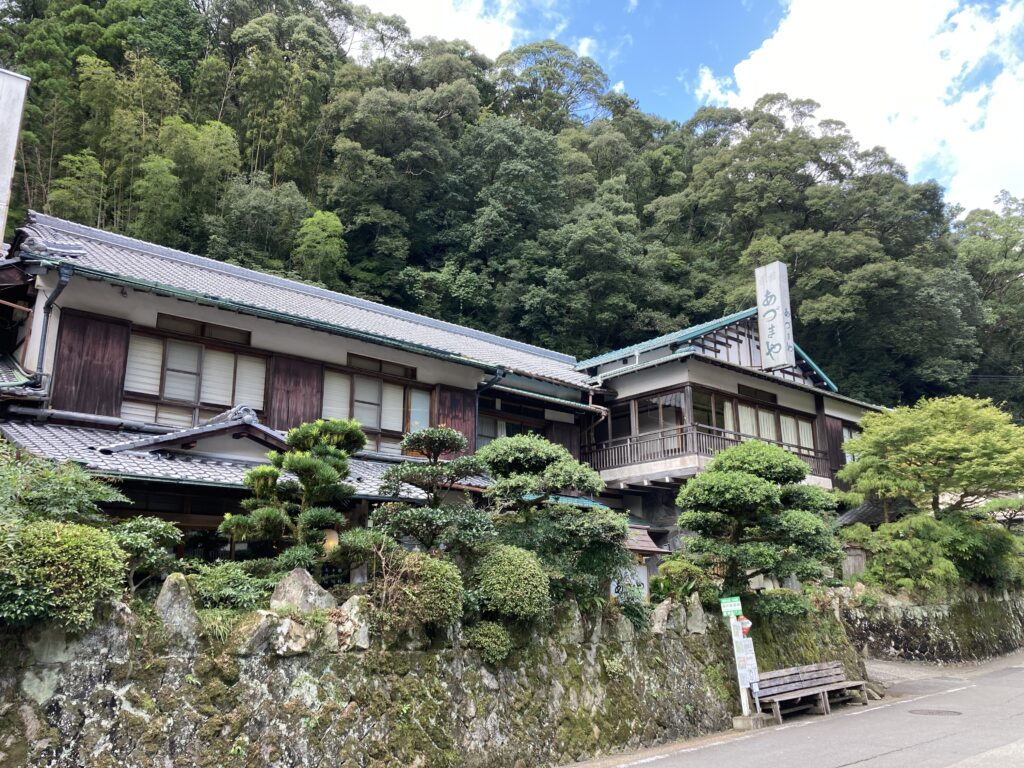
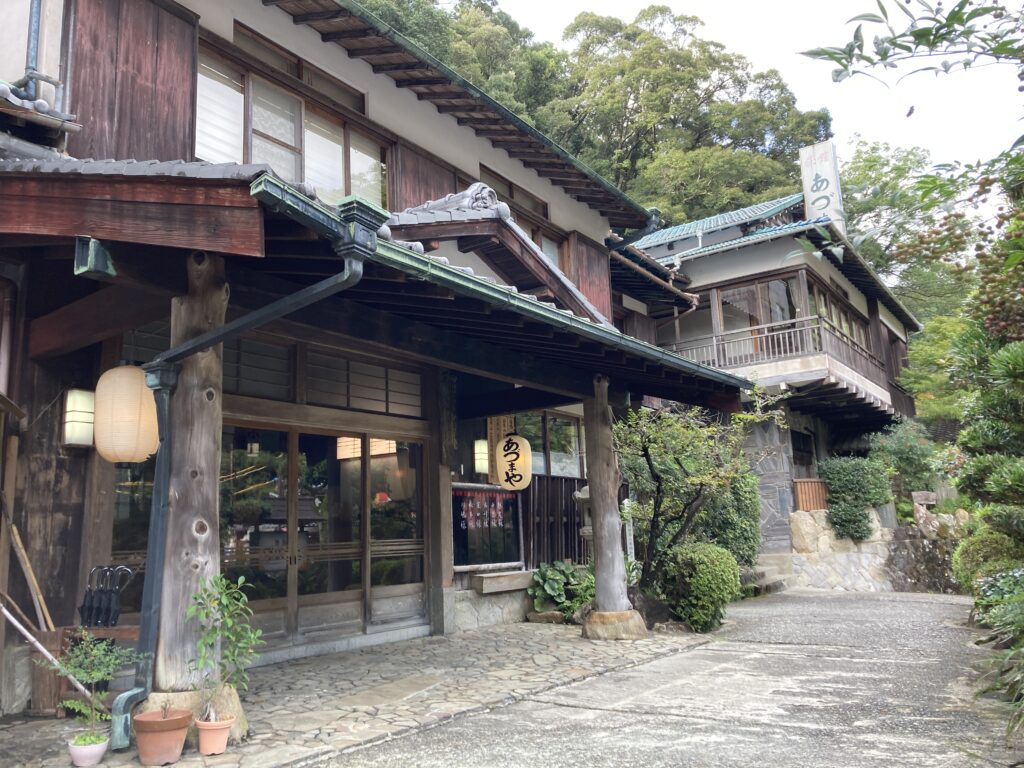
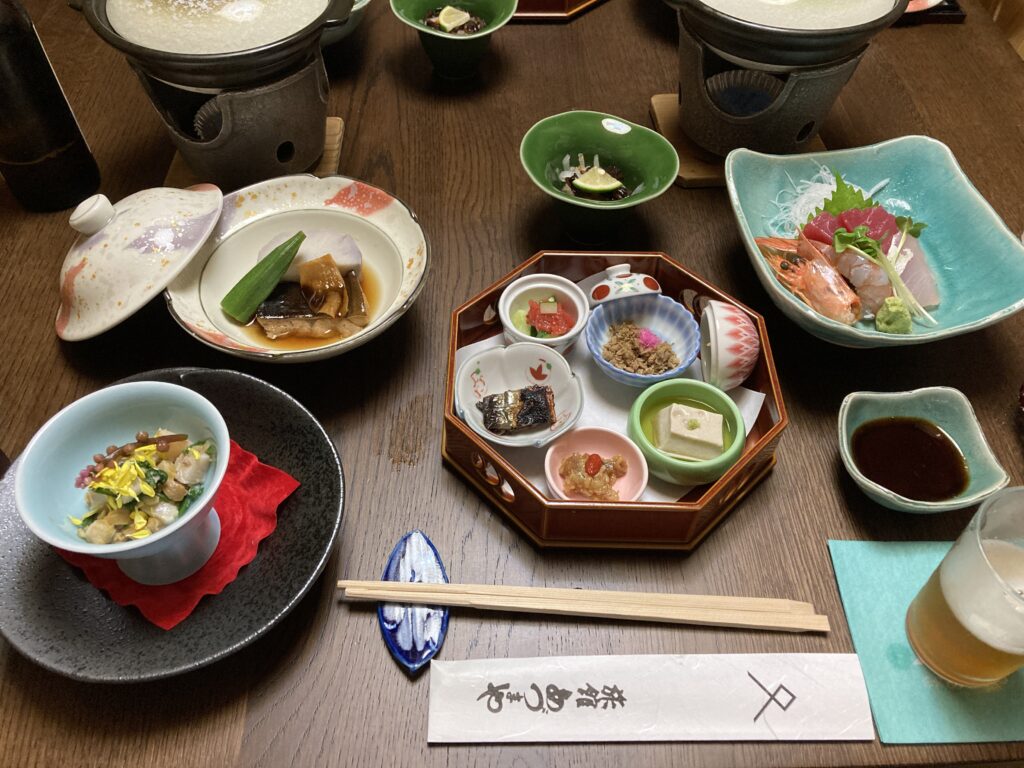
湯気の立ちのぼる夜の温泉街は、より風情が増して情緒がある。
The hot spring resort at night, with its steamy atmosphere, is even more quaint and emotional.
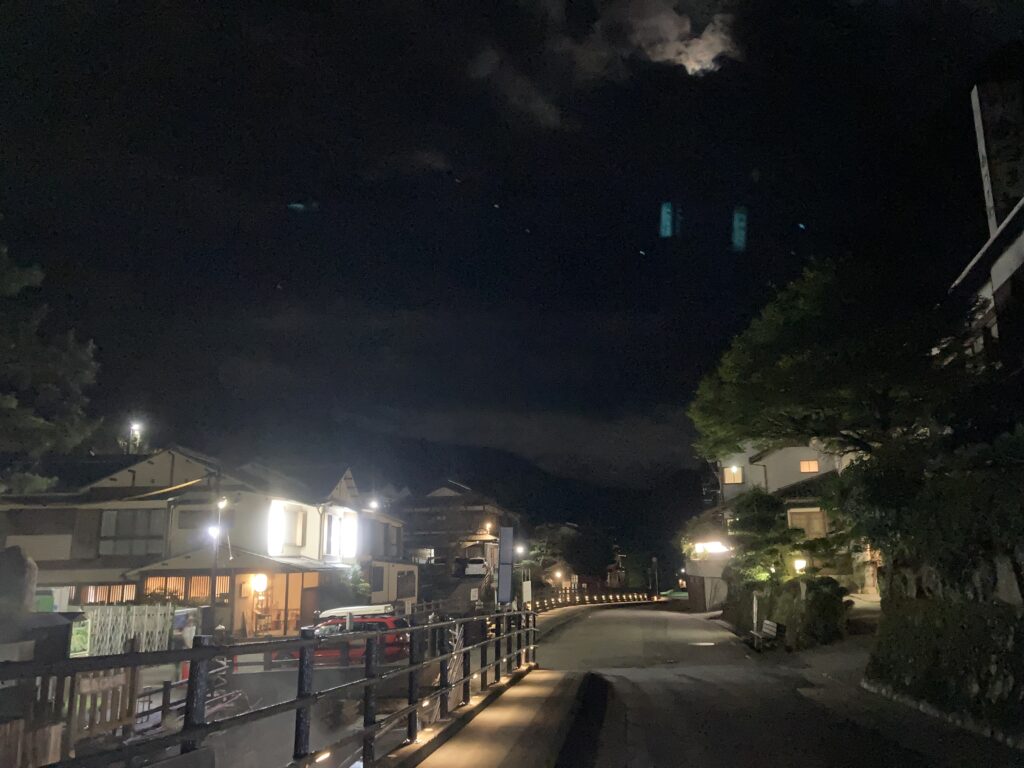
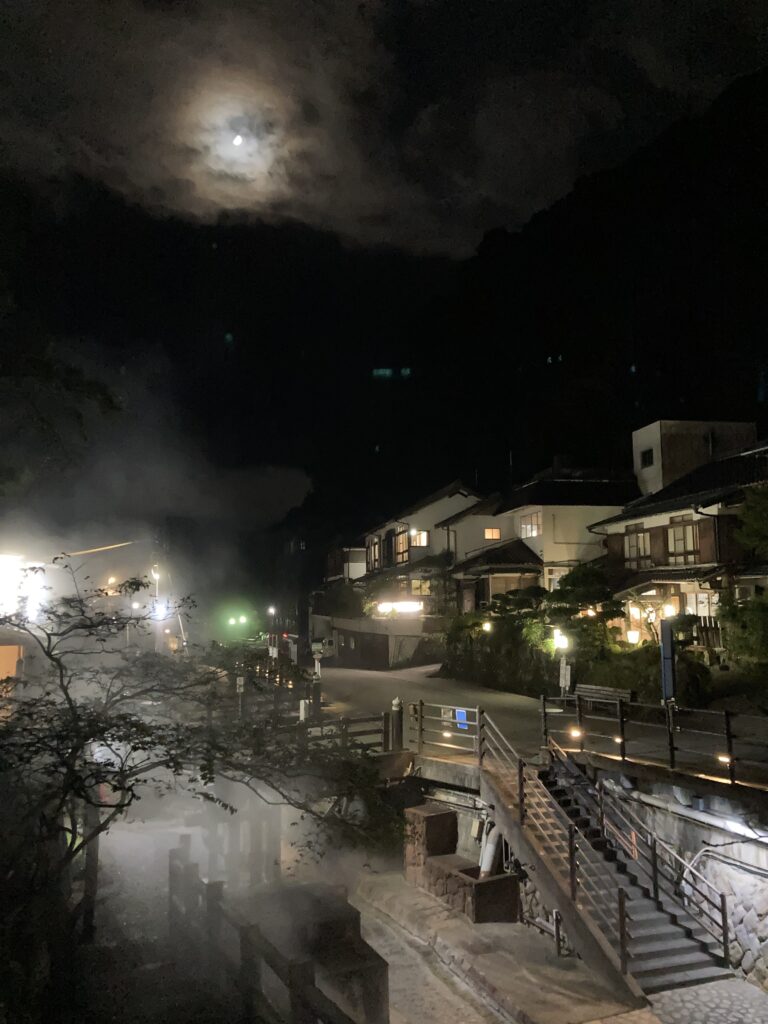
後編へ続く
To be continued part 3
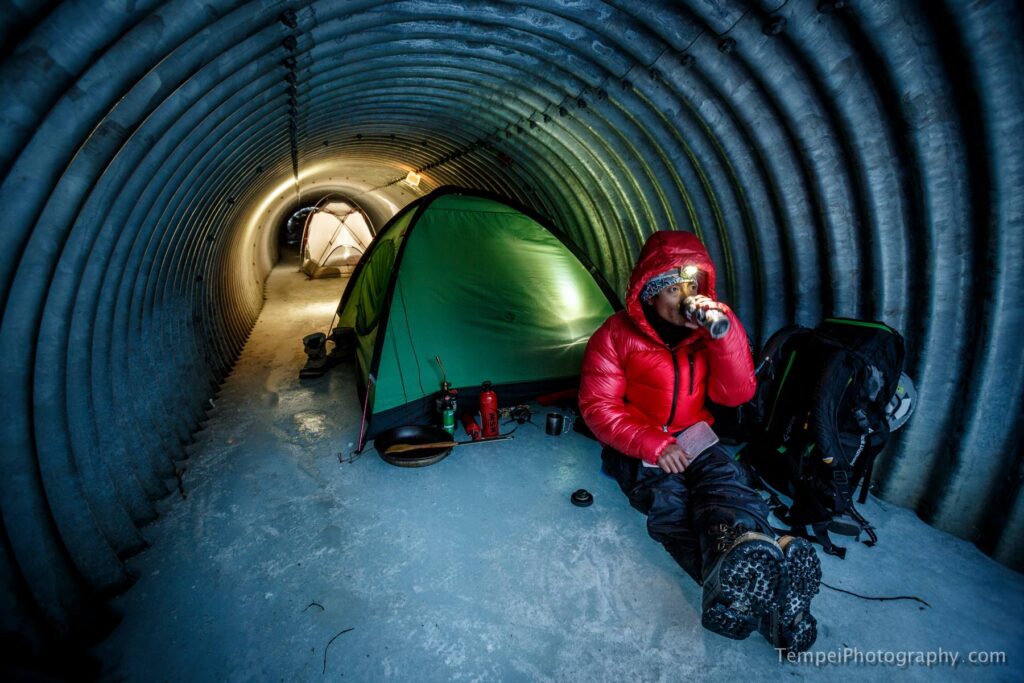
中島 力
Riki Nakajima
Blog:https://ameblo.jp/rikistyle/
Instagram:https://www.instagram.com/rikinakajima/
Guide Company HP for Winter :https://rikijg.com/jp/
Guide Company HP for Green Season :https://www.rikijapowguide.com
1981年、滋賀県出身。 カナダ・ウィスラーに留学中、CSIAインストラクター資格と、日本人初となるCFSAフリースキーインストラクター資格を取得。帰国後は数々のフリースキー大会への参加に加えて、バックカントリーでの滑走へも活動の場を広げた。ここ数年は、北海道トマムスキー場をベースに、スキーのレッスンやガイド、イベント運営、MCなどその動きは多岐にわたっている。また、毎年春になると海外へとわたり、アドベンチャー要素の高い山行を継続的にトライし、その模様を映像や写真、イベントで表現している。 ガイドカンパニー「RIKI JAPOW GUIDE」代表。
Born in Shiga Prefecture in 1981. While studying in Whistler, Canada, he became a certified CSIA instructor and the first Japanese freeski instructor to receive the CFSA freeski instructor certification. After returning to Japan, he expanded his activities to include backcountry skiing in addition to participating in numerous freeskiing competitions. For the past few years, he has been working at Tomamu Ski Resort in Hokkaido, giving ski lessons, guiding, managing events, and acting as an MC. He also travels abroad every spring to try his hand at high adventure mountain climbing, and expresses his experiences through videos, photos, and events. He is the representative of the guide company “RIKI JAPOW GUIDE”.